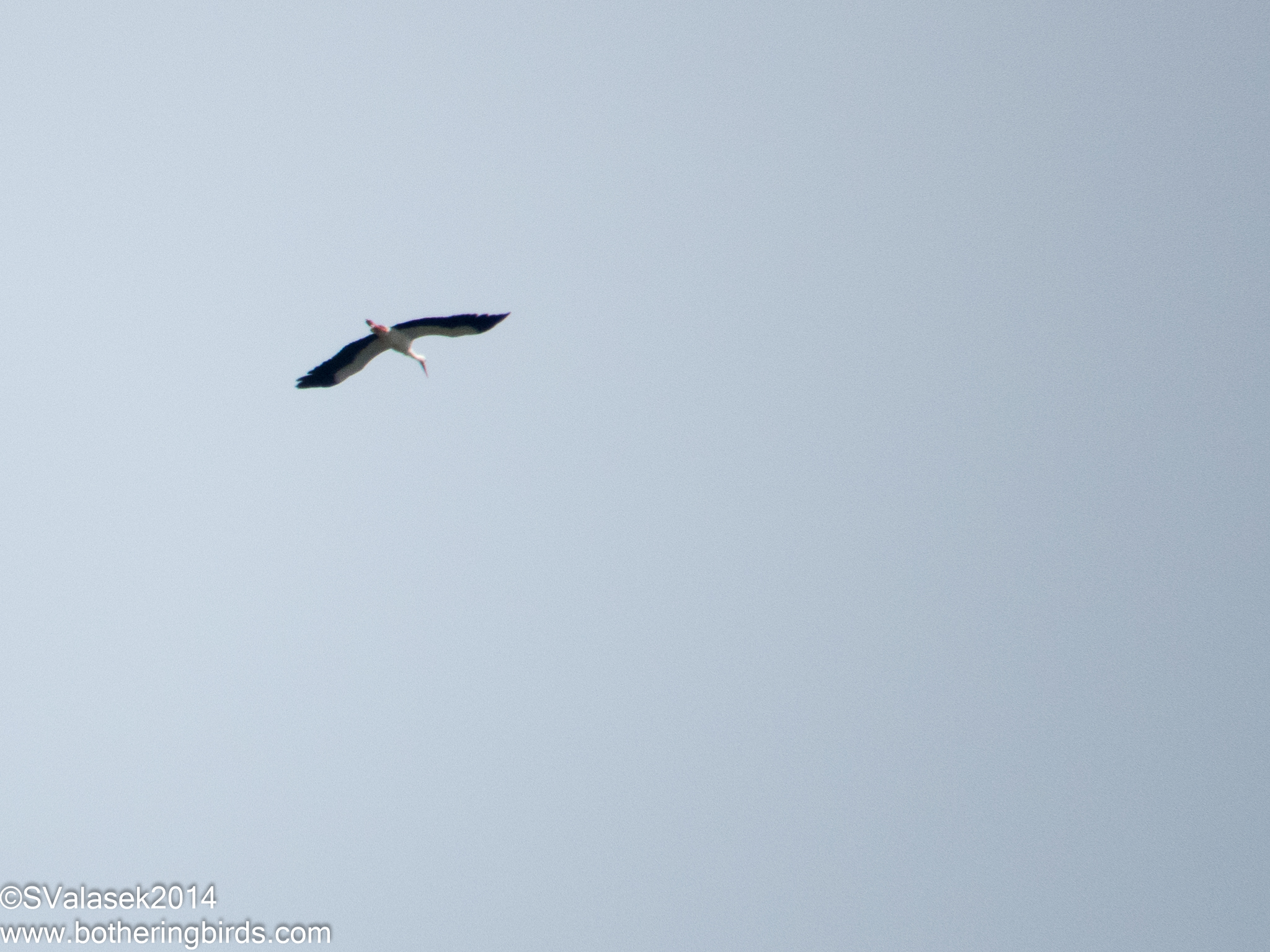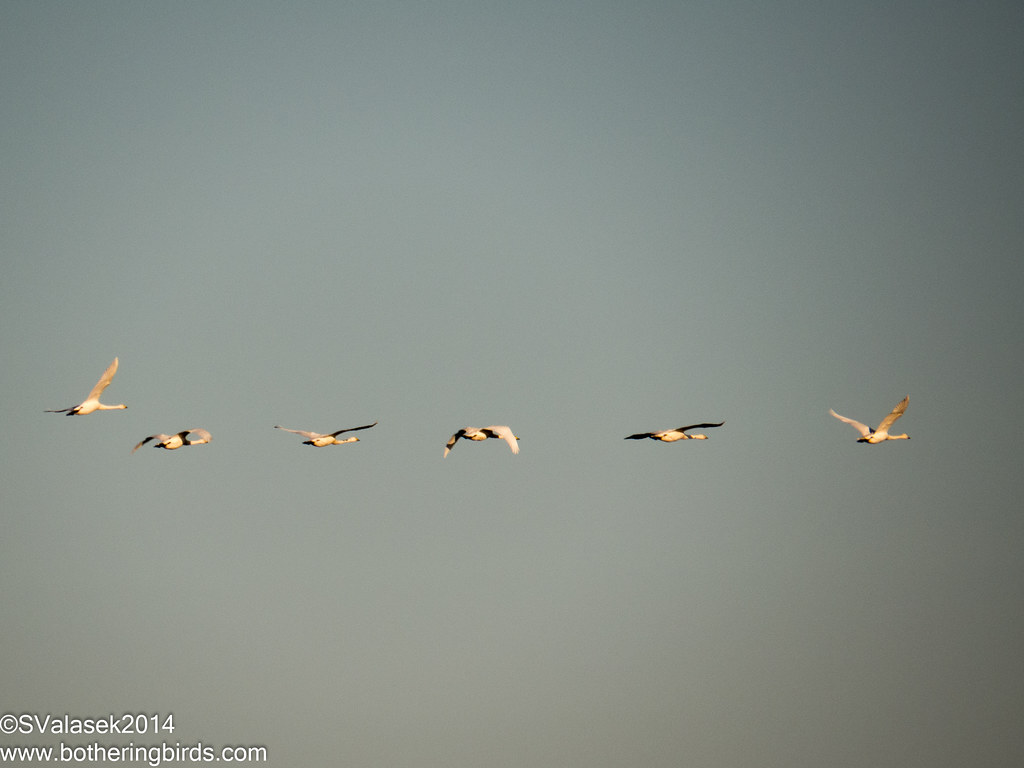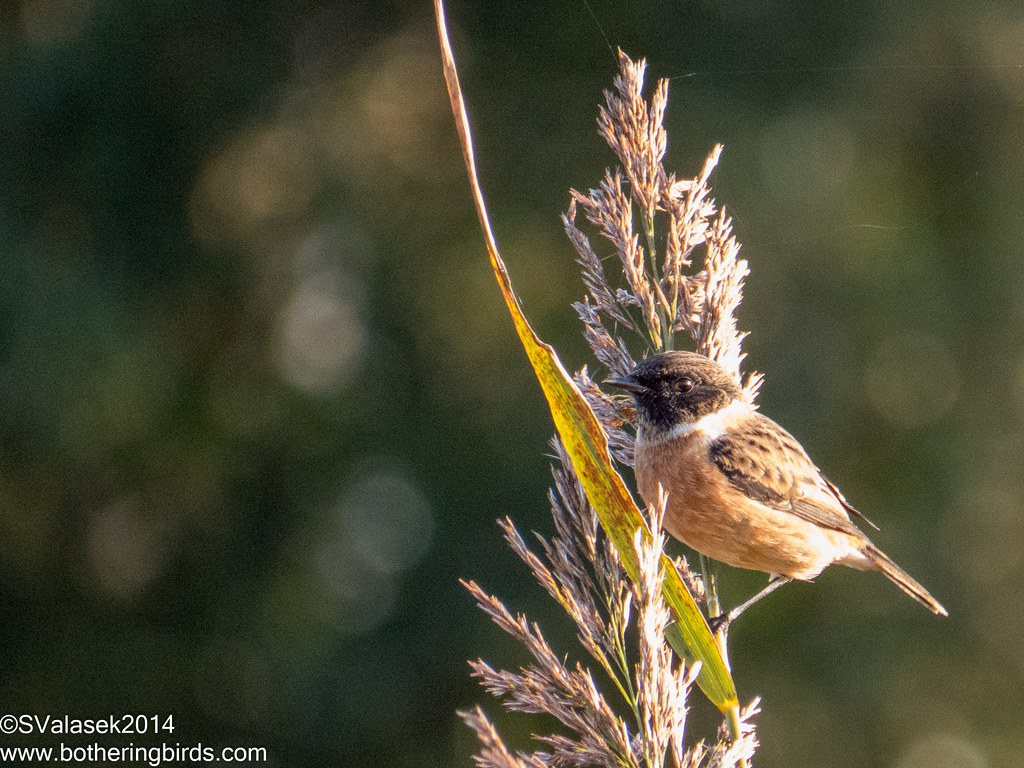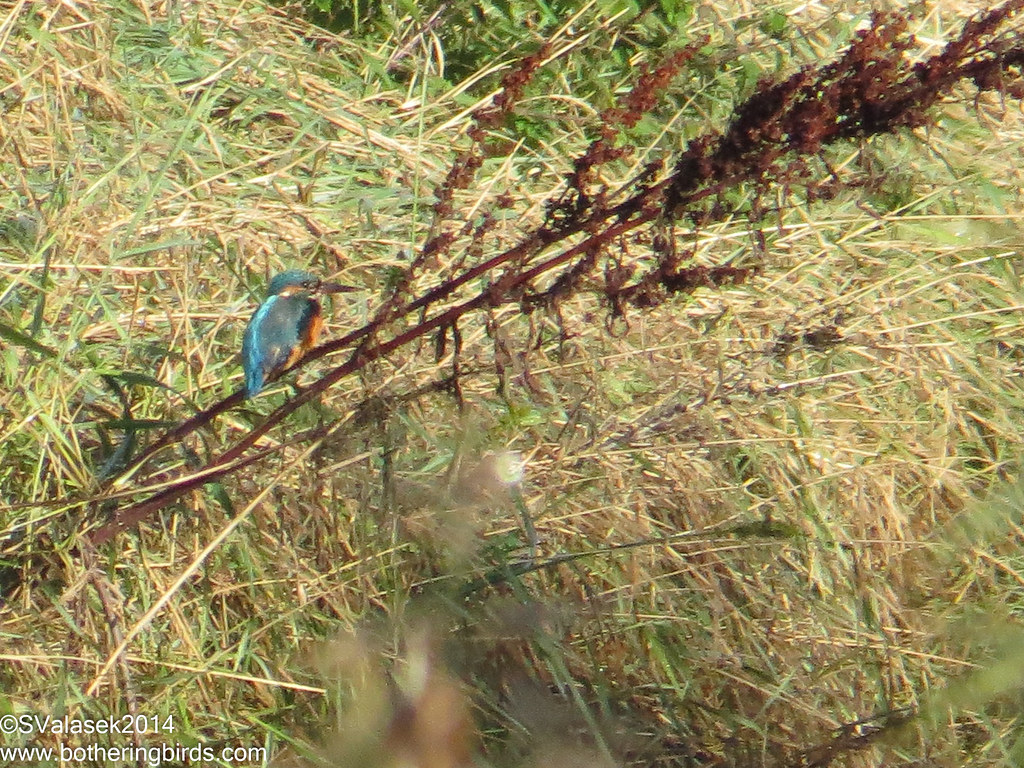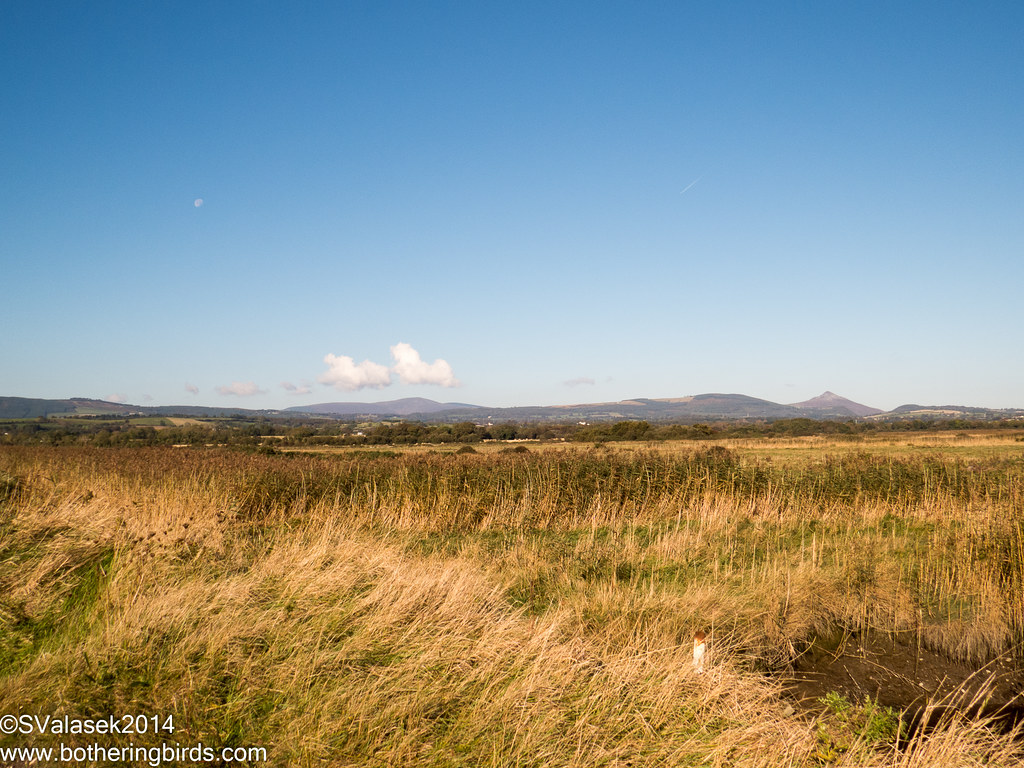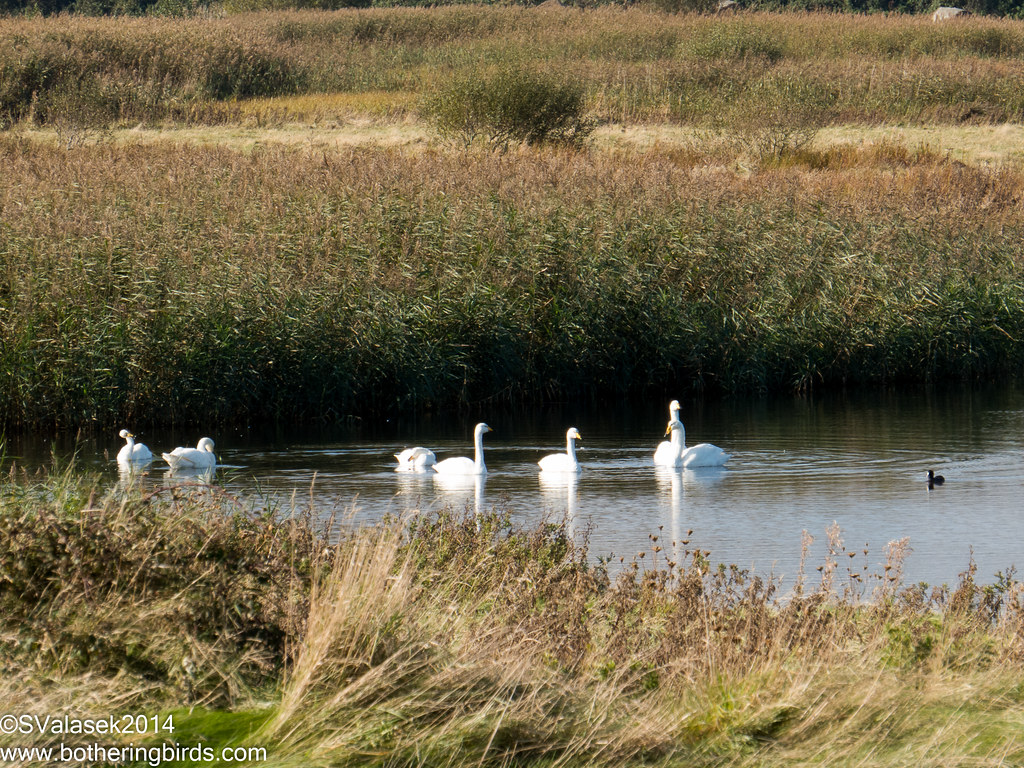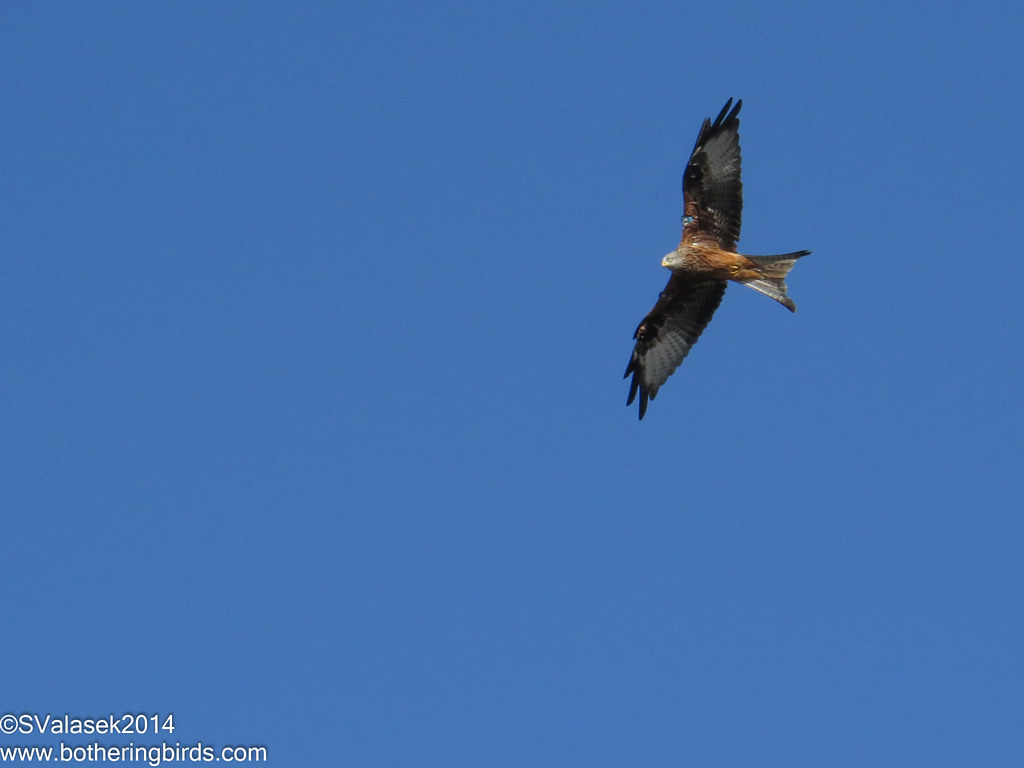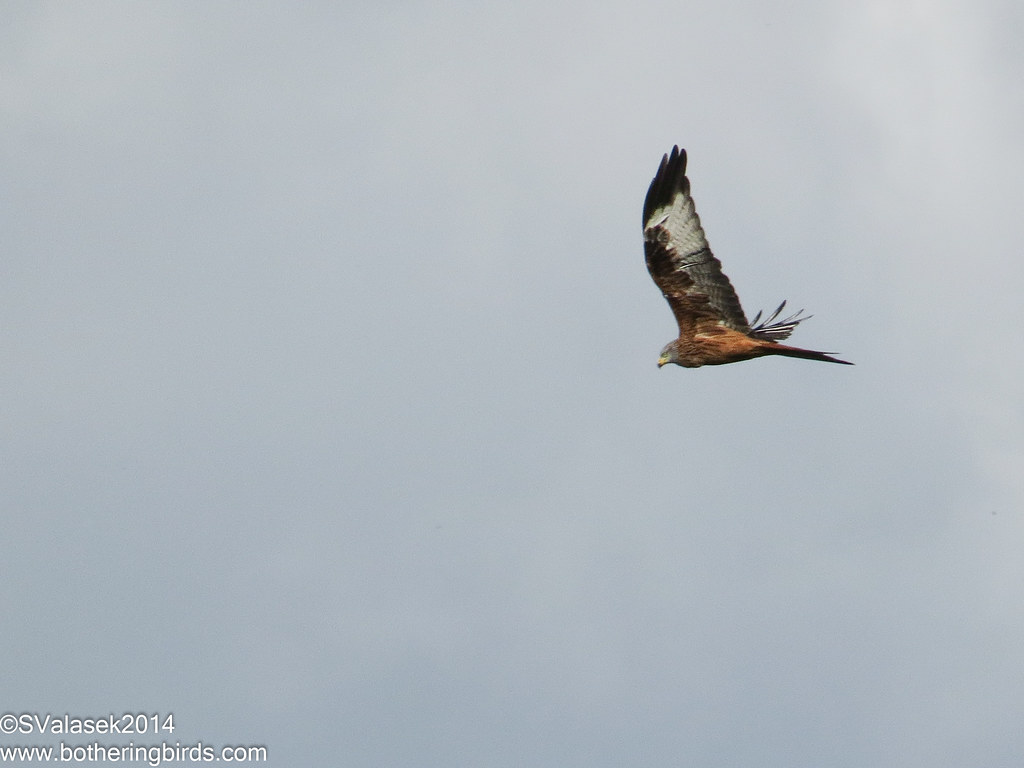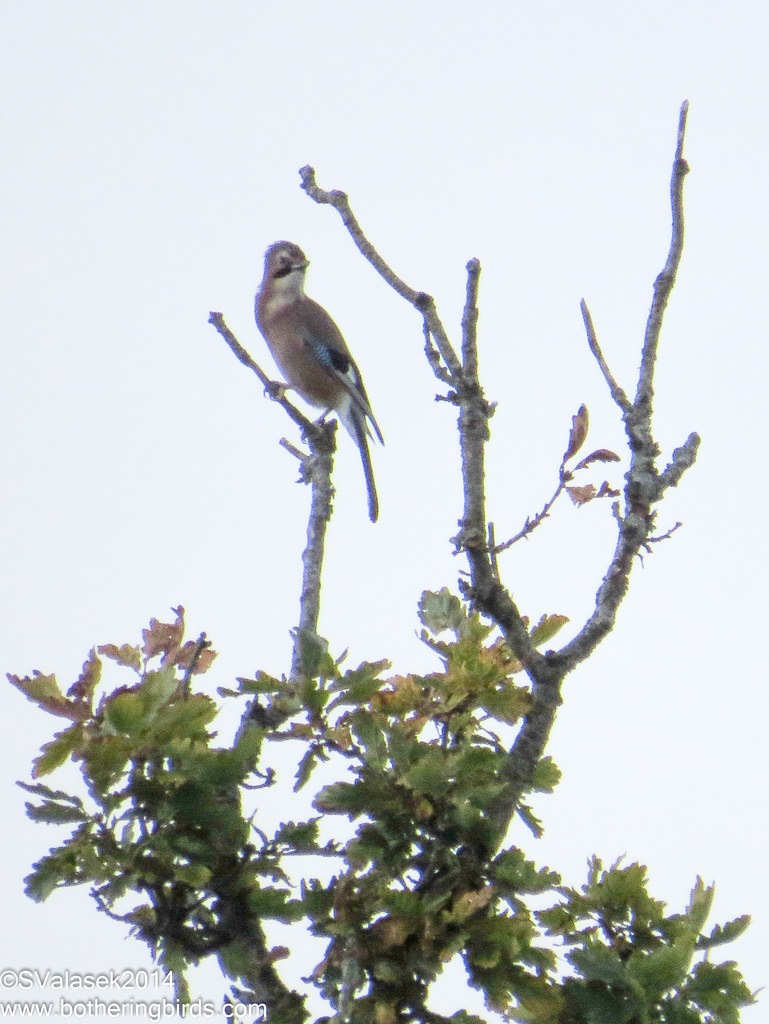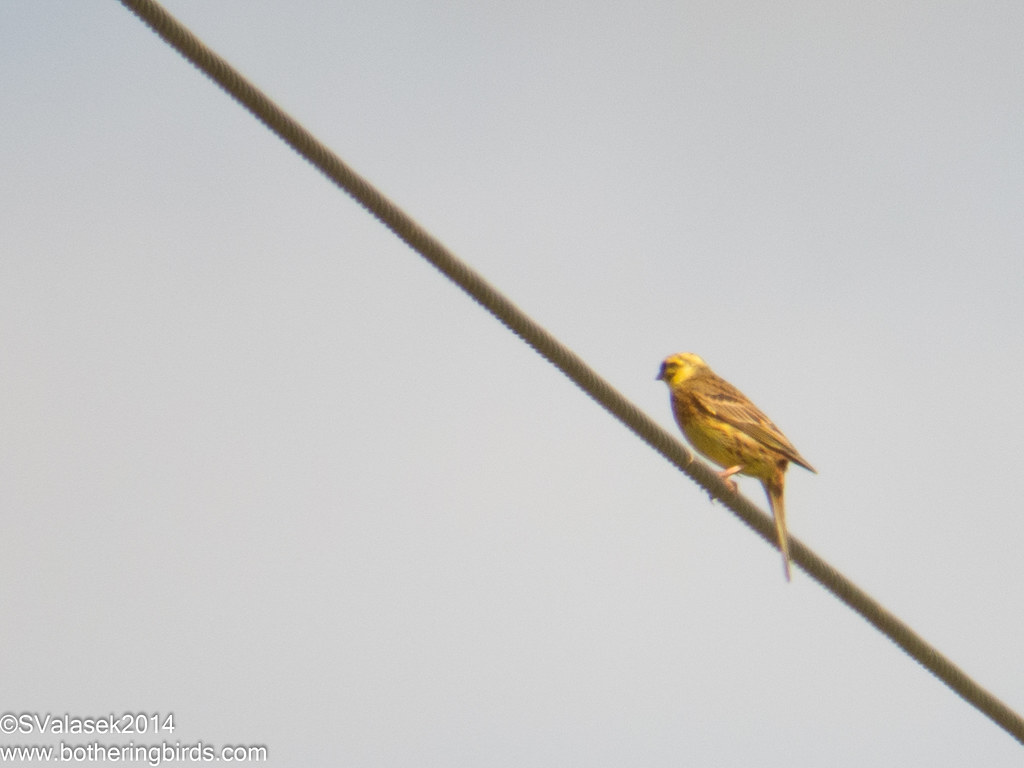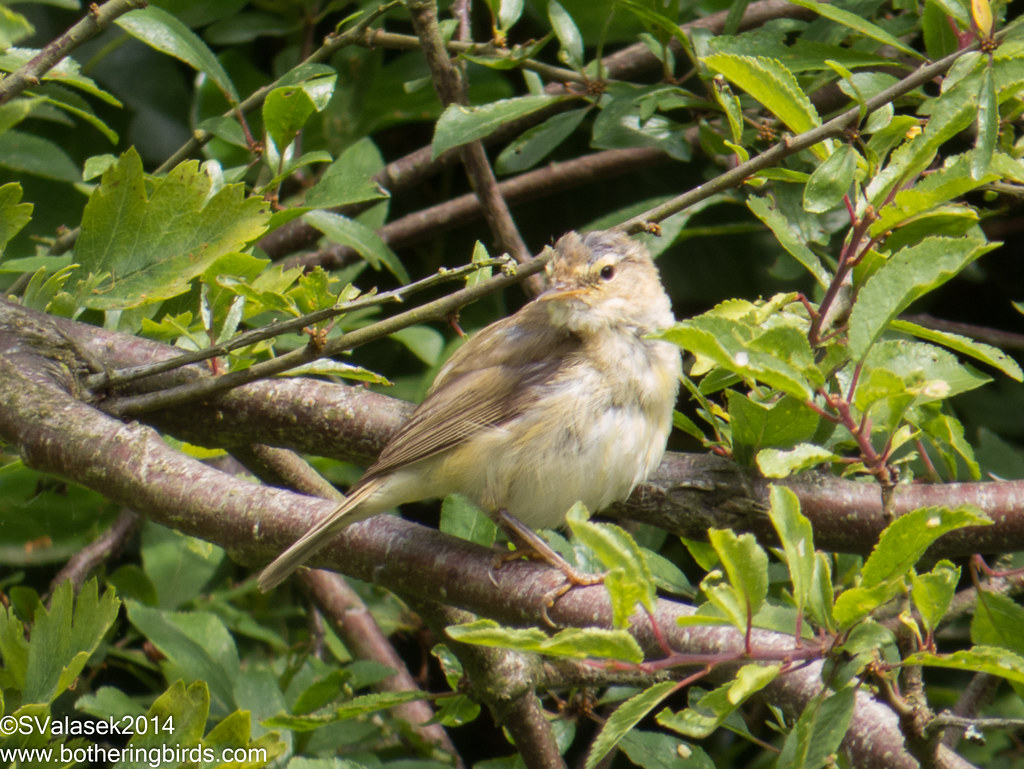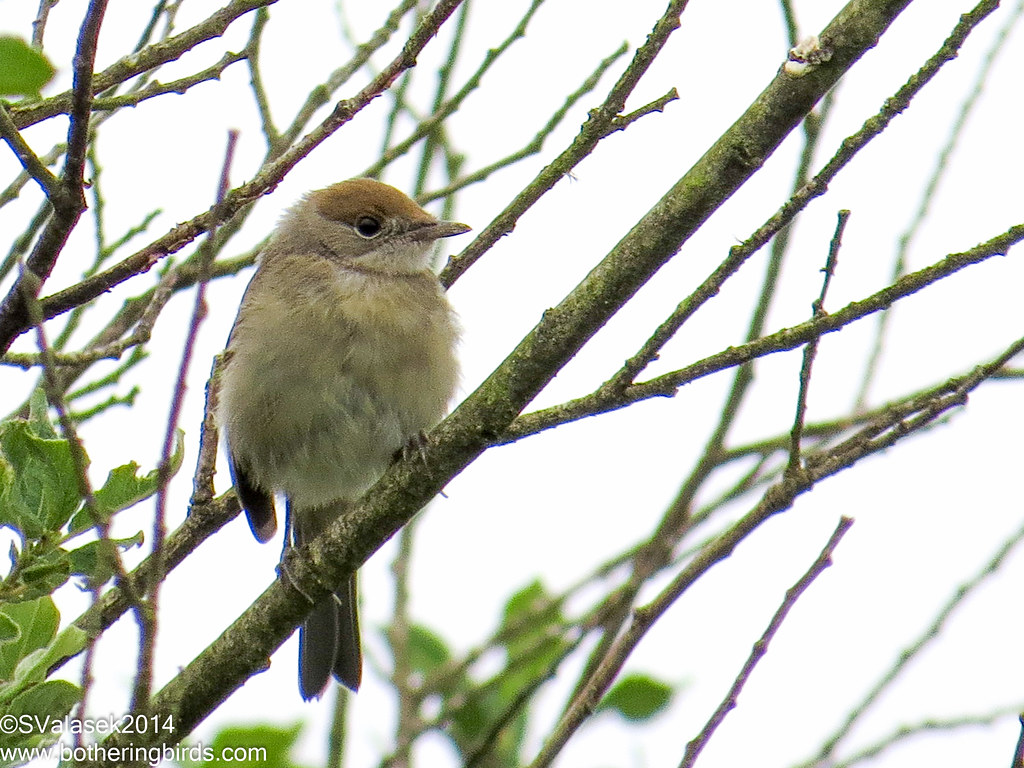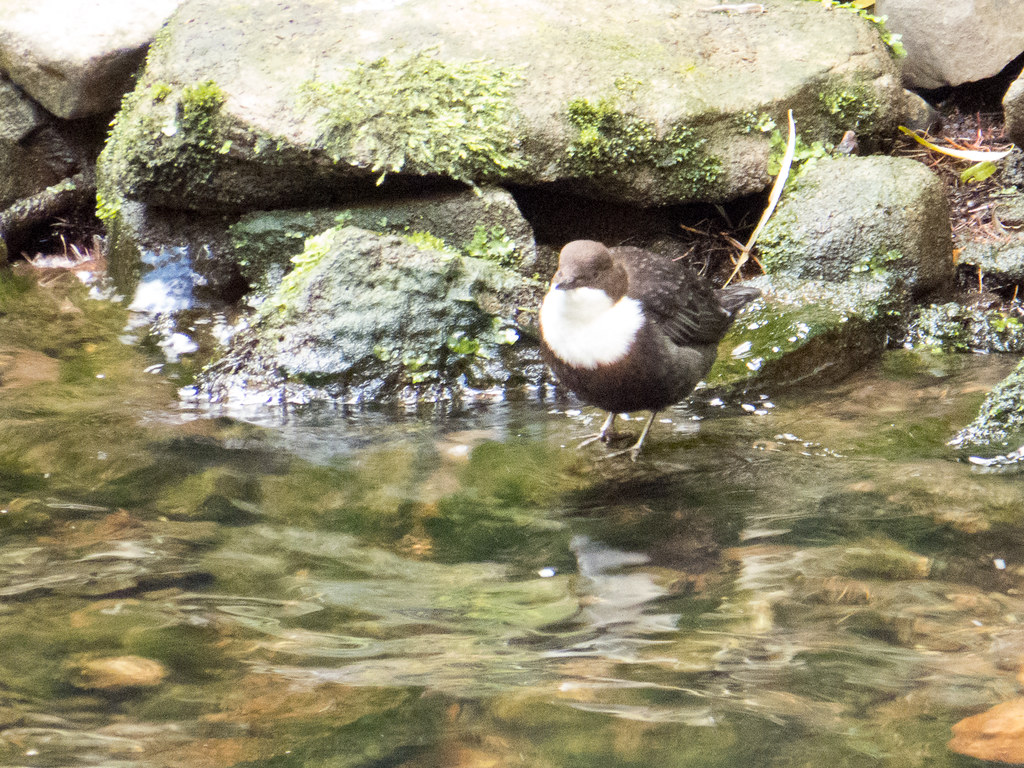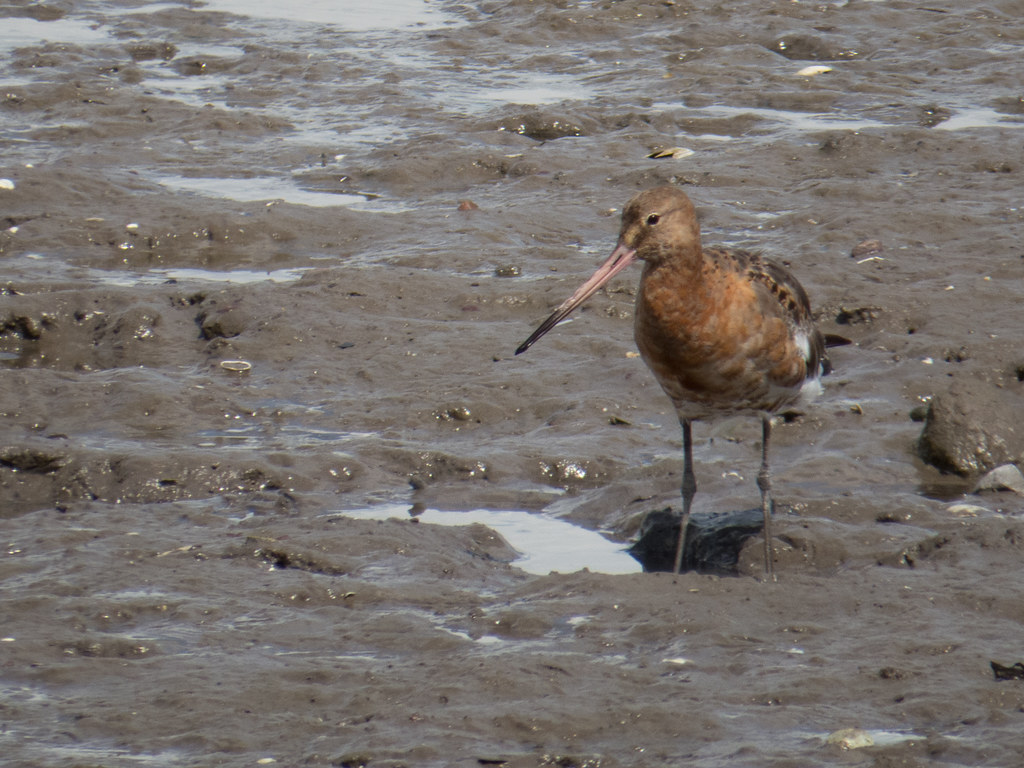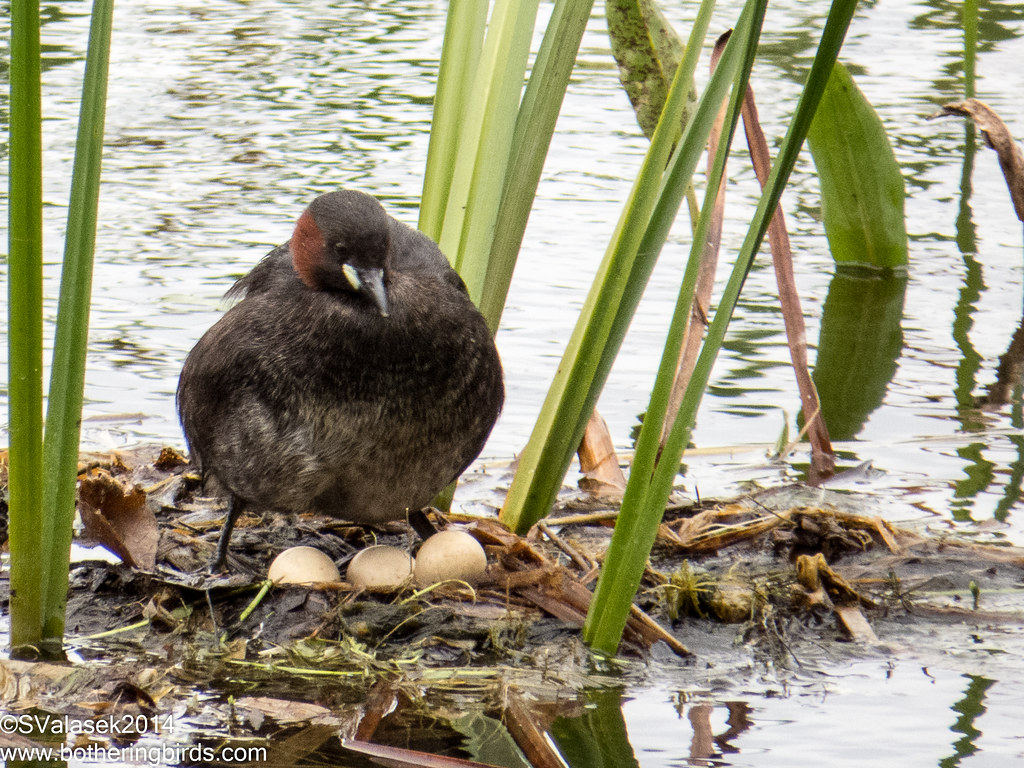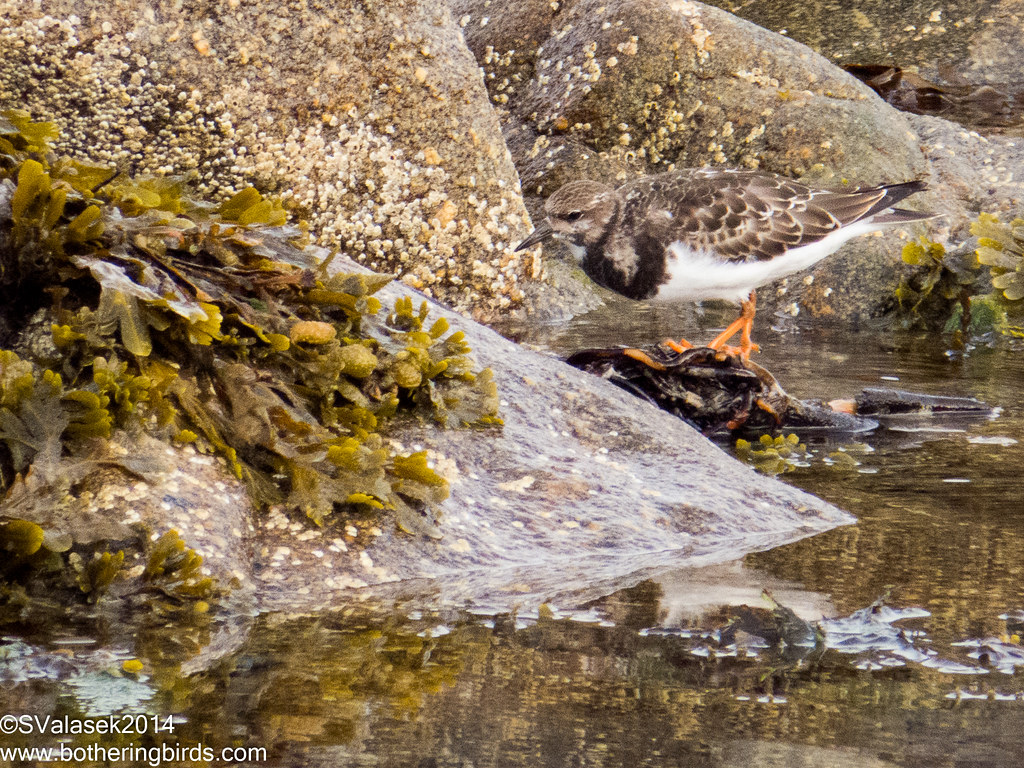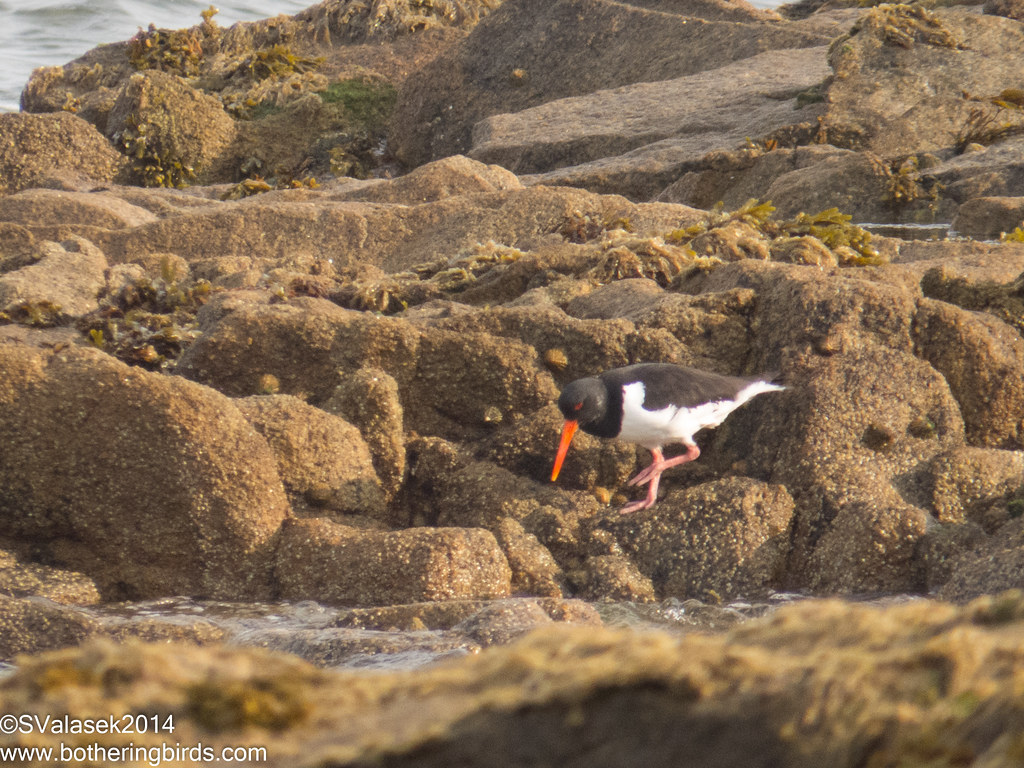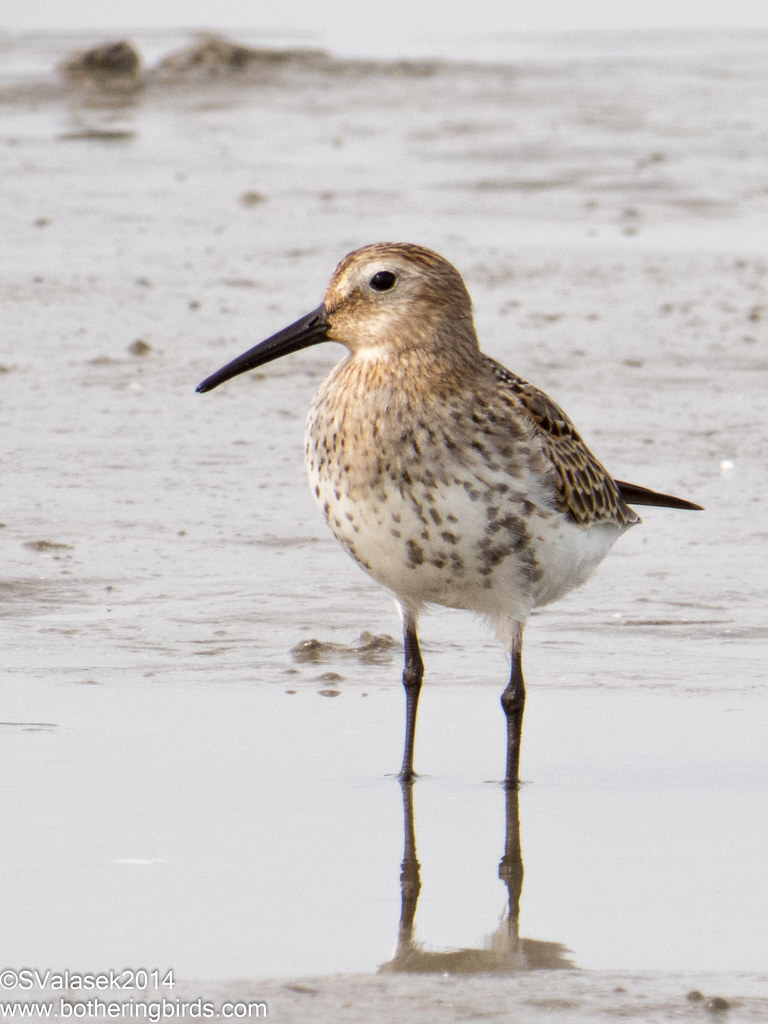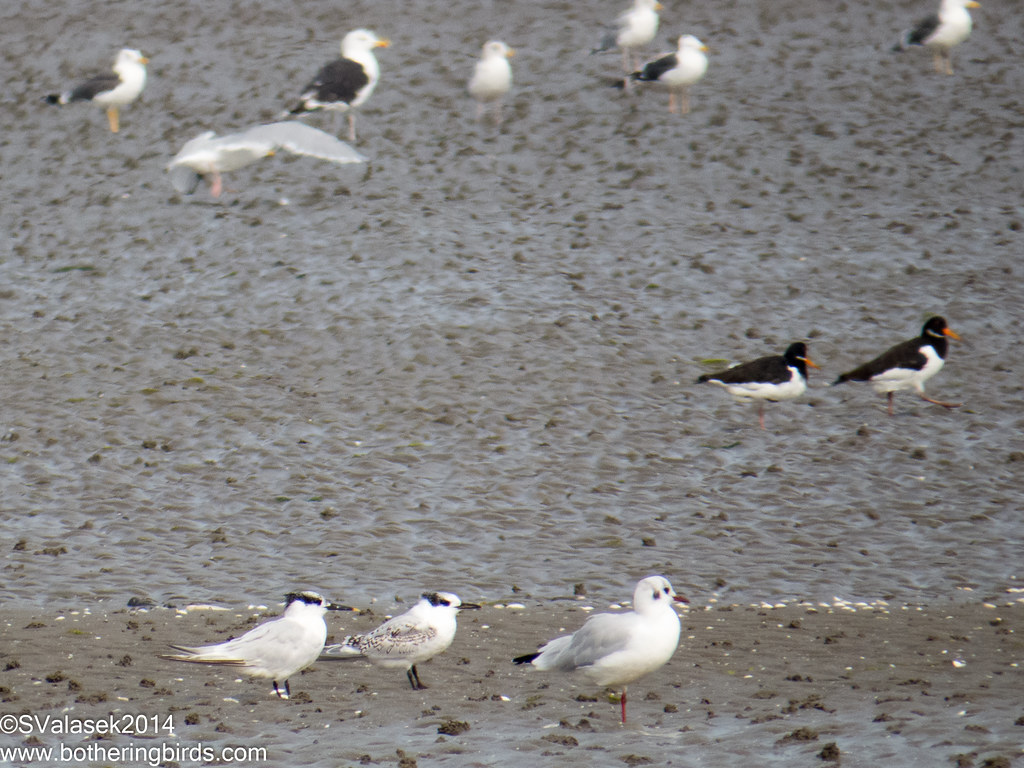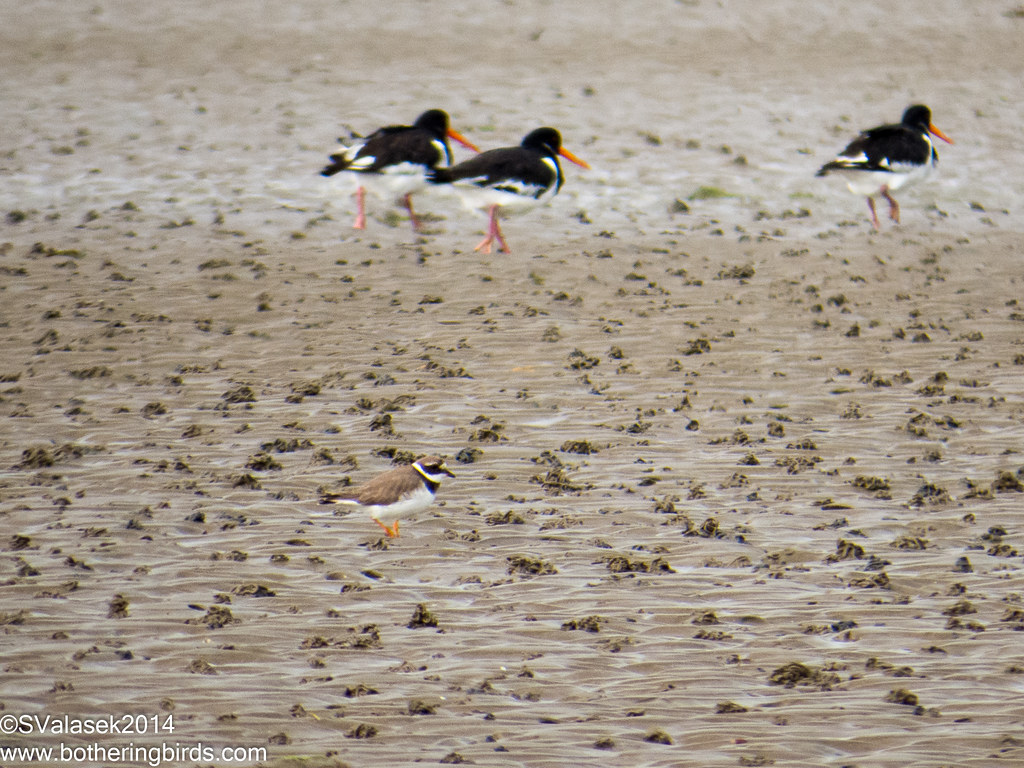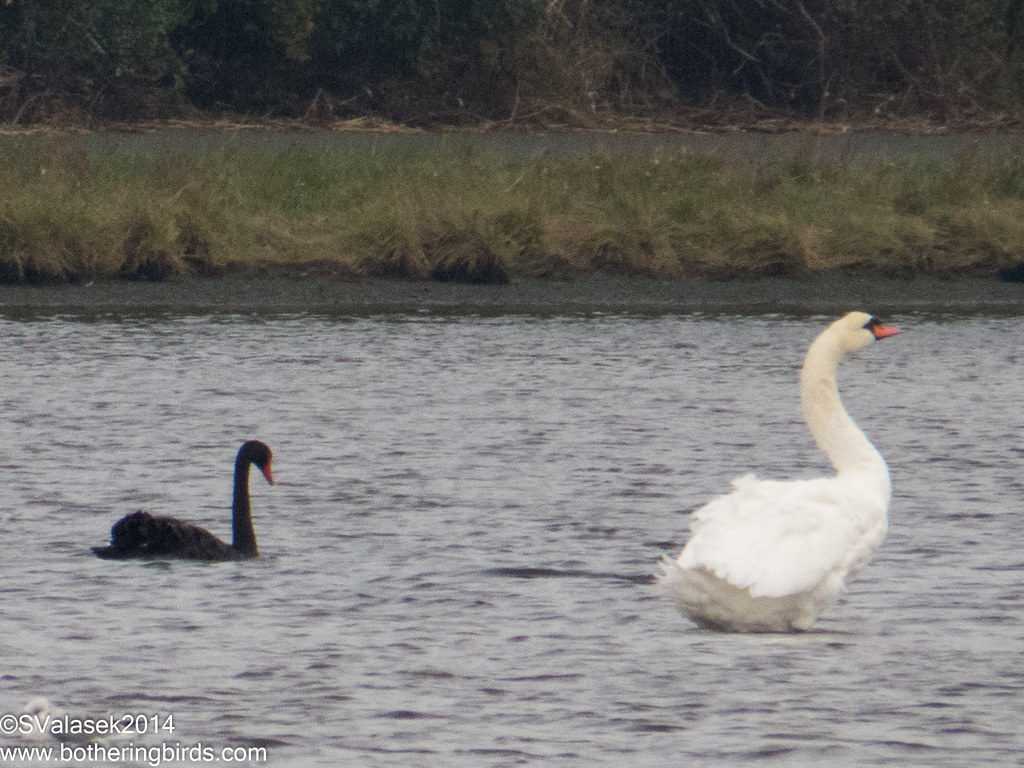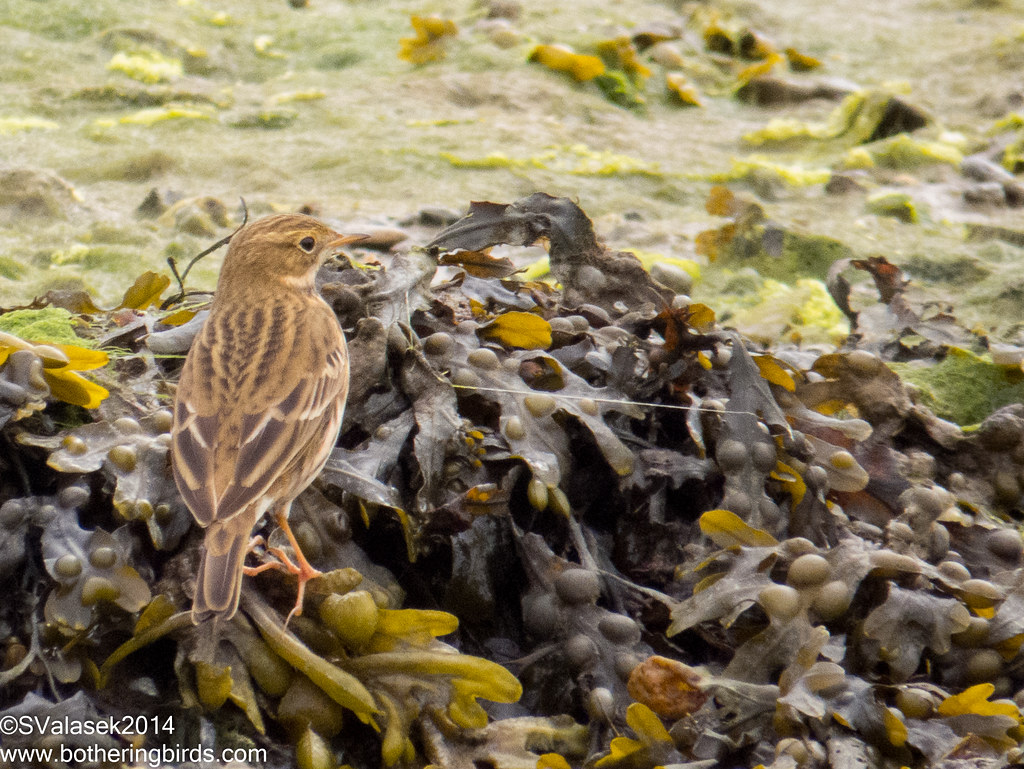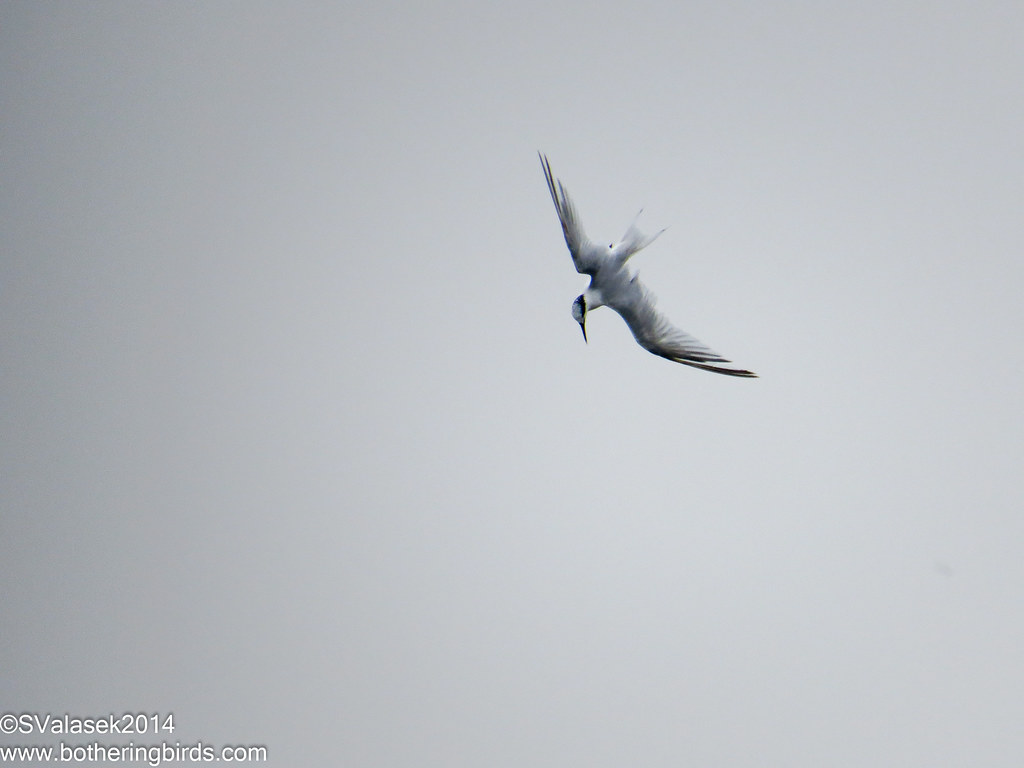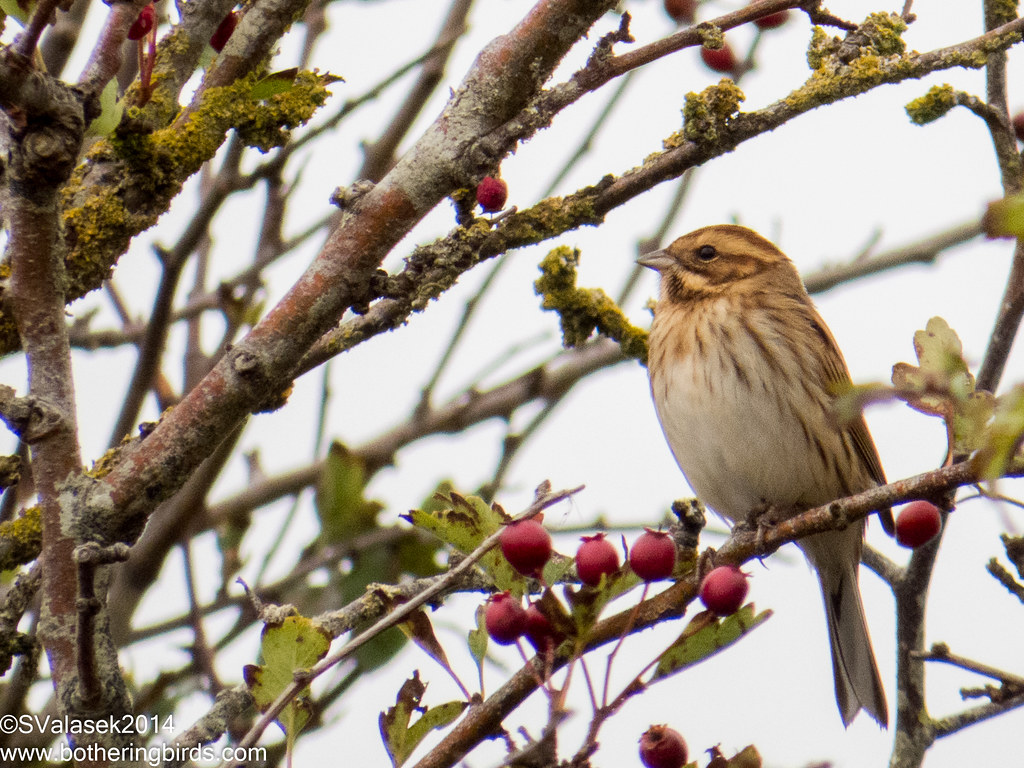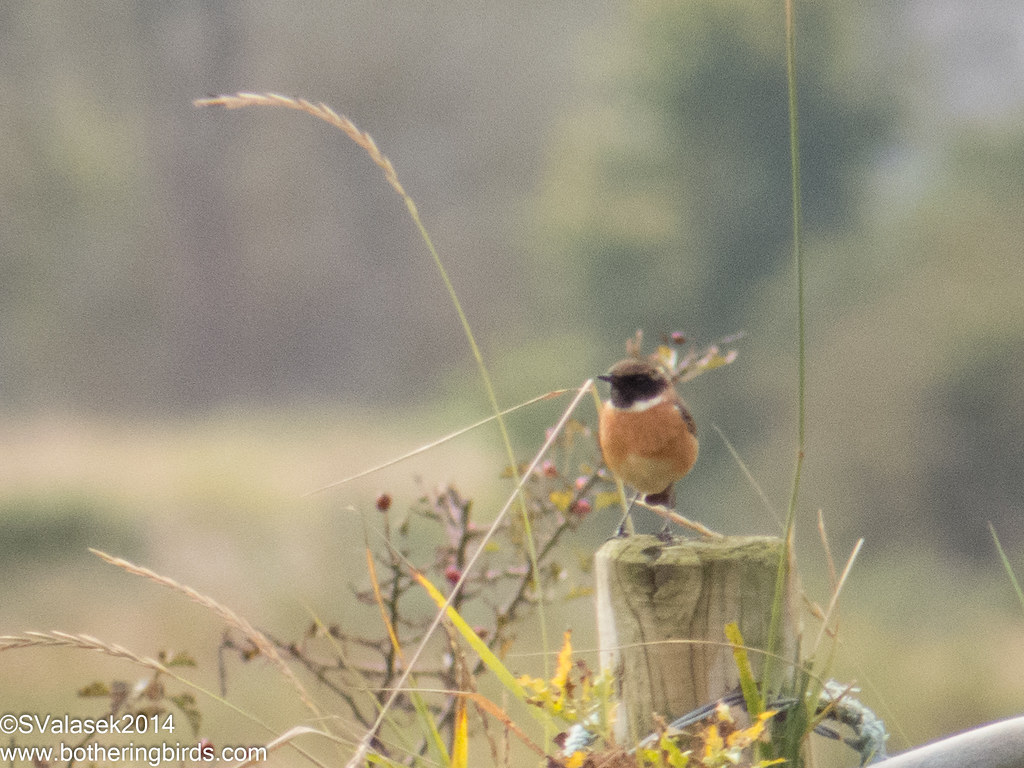Saturday morning came and I drove from our hotel in Albufiero west towards Faro before dawn. Georg and I had a funny moment when we were both in a filling station drinking coffees side by side while waiting for the other to show up. It was 5 minutes before we said something to one another.
Something else interesting about Portugal was that everyone drank shots of espresso, almost all of the time. And the tiny filling station served coffee in ceramic cups and food on real plates with real silverware, not a very busy culture.
Our first stop was some very fragrant sewage ponds for waders and whatever else we could see. First we saw some Spotless Starlings and heard some Common Waxbills and then saw a Marsh Harrier circling out over the fields around the ponds. When we finally reached the ponds I saw lifer Black-Winged Stilts and Glossy Ibis. And then a small, pale bird. It was a lonely Sanderling, and another lifer for me.
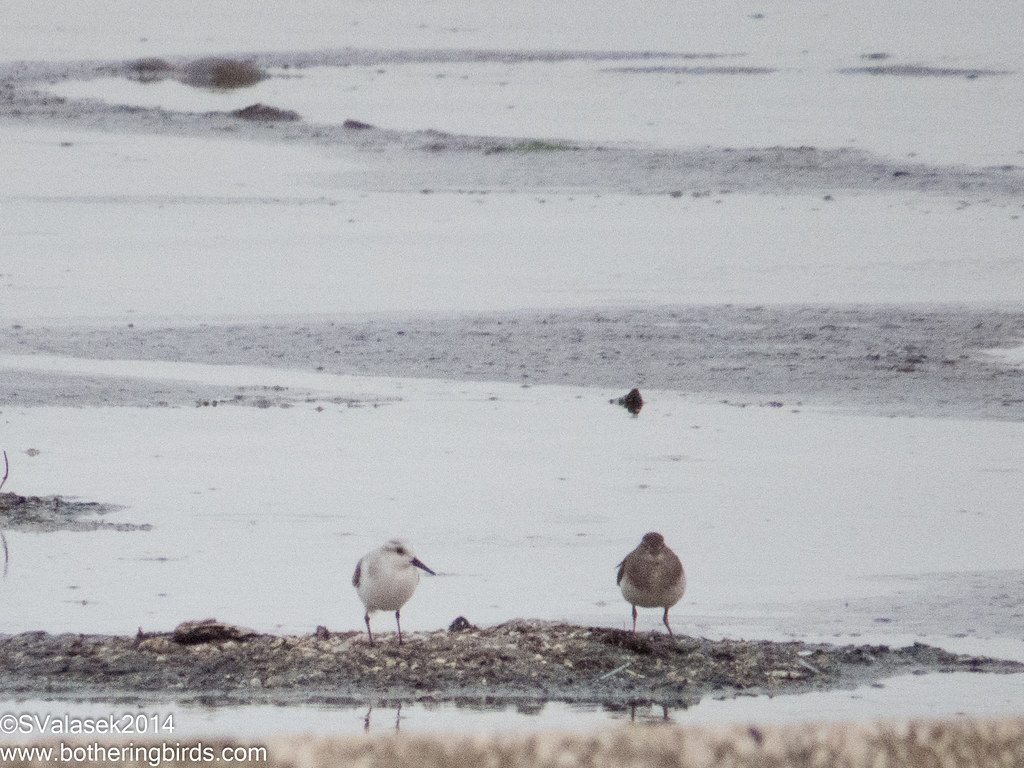 |
| Sanderling (L) and Common Sandpiper (R) - Faro, Portugal |
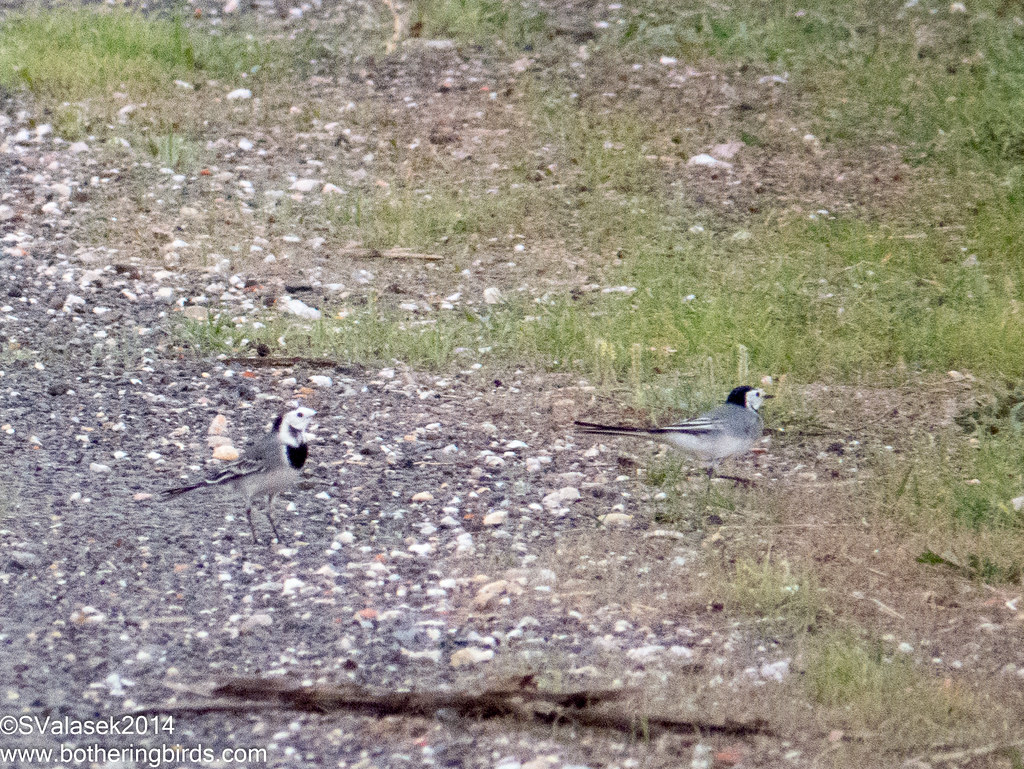 |
| White Wagtails - Faro, Portugal |
We left the ponds with a list of 44 species and 18 lifers in less than an hour of birding.
Our next spot was closer to Faro and the Aeroport. A mixed forest which led to some salt ponds, a golf course and finally sand dunes, lagoons and the ocean.
We walked through some trees to a spot over-looking a wide forest valley. Our targets here were raptors. It started off quiet. A solitary Booted Eagle was roosting in a tree, which my guide somehow spotted. And then a white bird in a tree turned out to be a Black-Shouldered Kite through the scope. And then far off in another tree was a grey bird, a surprise Northern Goshawk. All too far or any sort of photo, but great spots. And then three Booted Eagles were in the air at one time and one of them came close enough for a good shot.
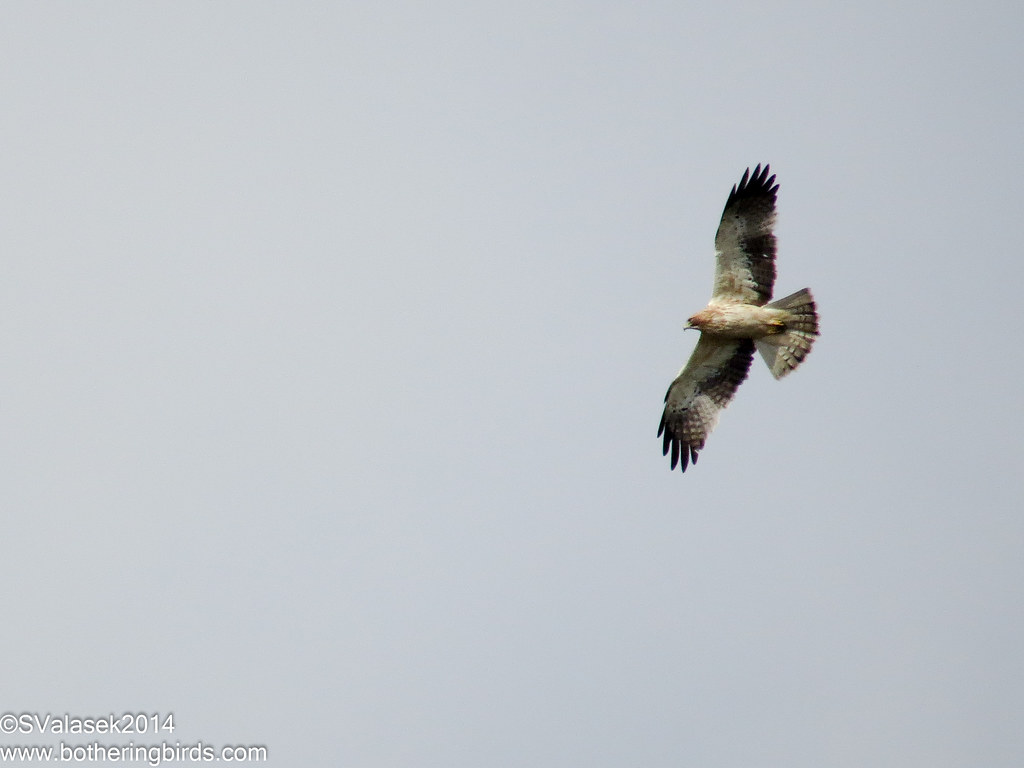 |
| Booted Eagle - Faro, Portugal |
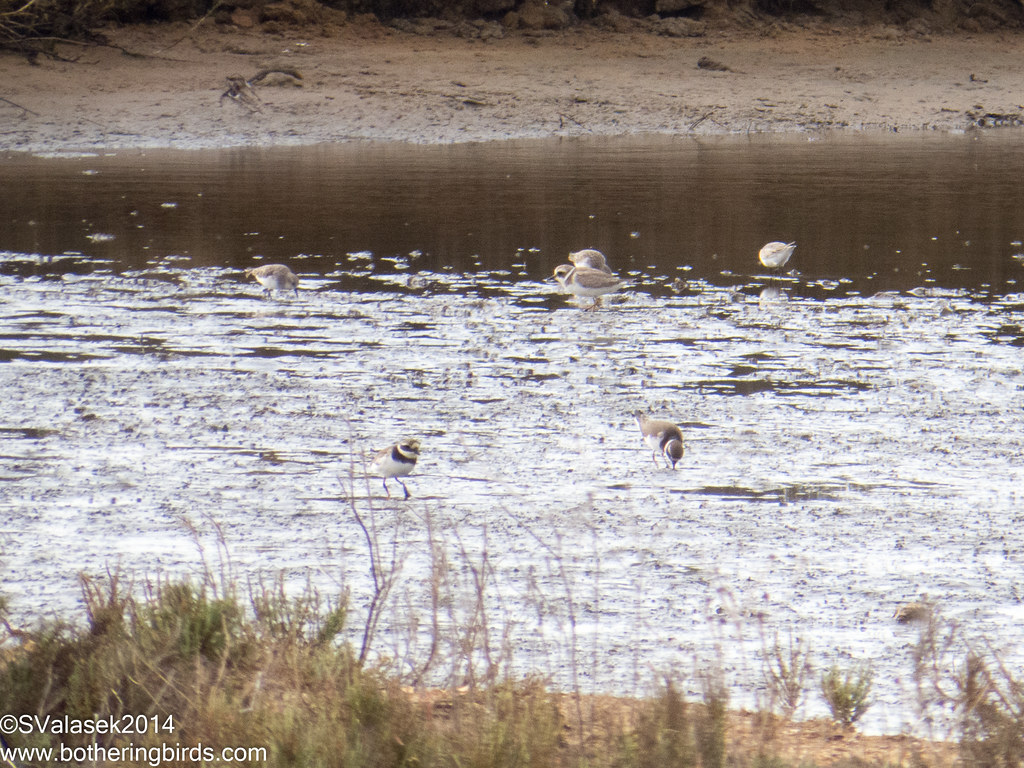 |
| Kentish and Ringed Plovers - Faro, Portugal |
Another of the birds that I really wanted to see were all around, Flamingos. We had seen some in Lisbon while driving down in the car, but I wasn't keeping track and was driving instead. But now they were everywhere, at least 30 were on both sides of the road.
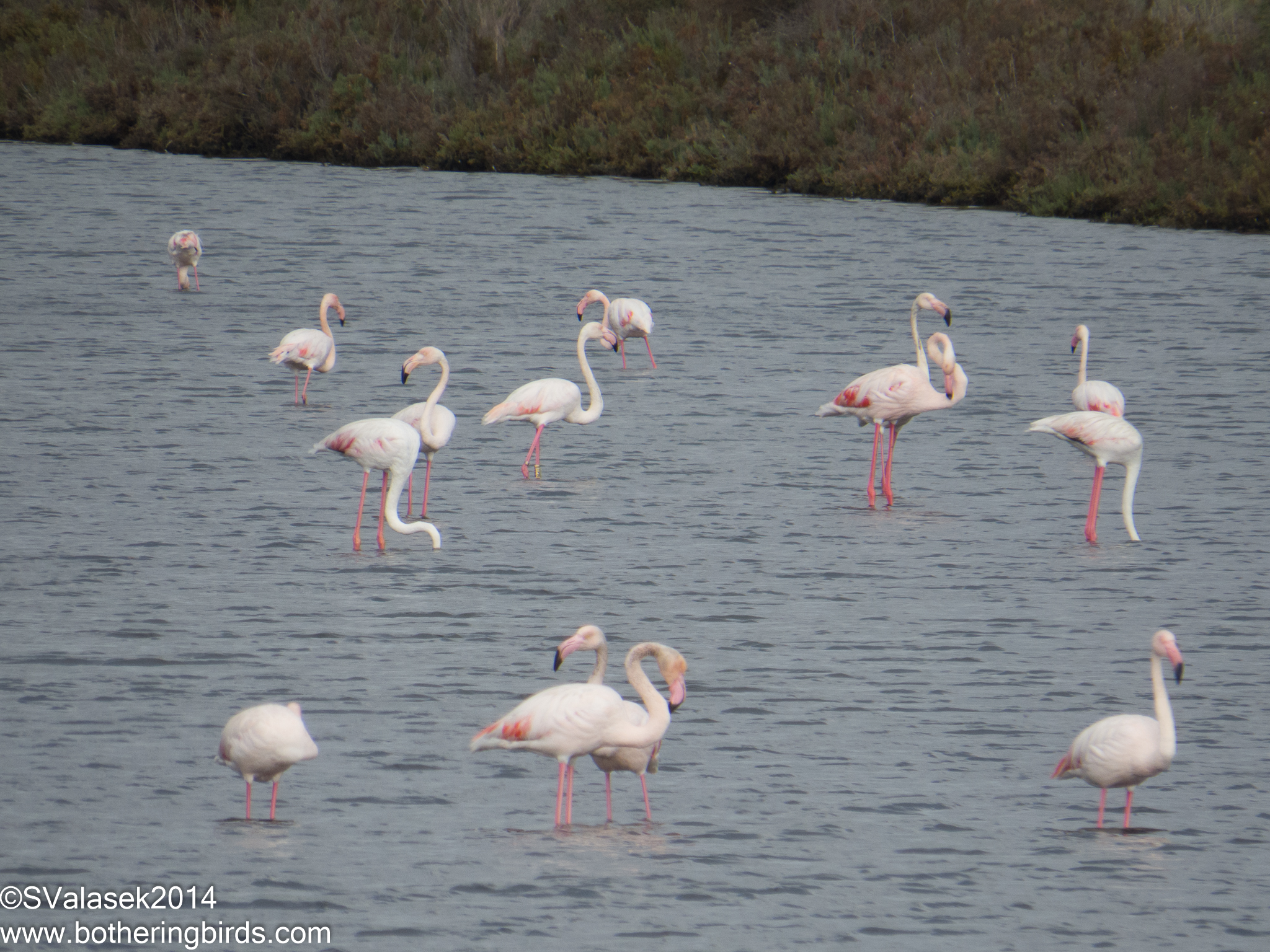 |
| Flamingos - Faro, Portugal |
We left the last of the salt ponds and parked the car near the San Lorenzo Golf Course and continued on foot. Another bird to see in Portugal is the Iberian Magpie, a much more colorful cousin to the, mainly, black and white magpies that I have seen before. We were able to see a few along the fairways.
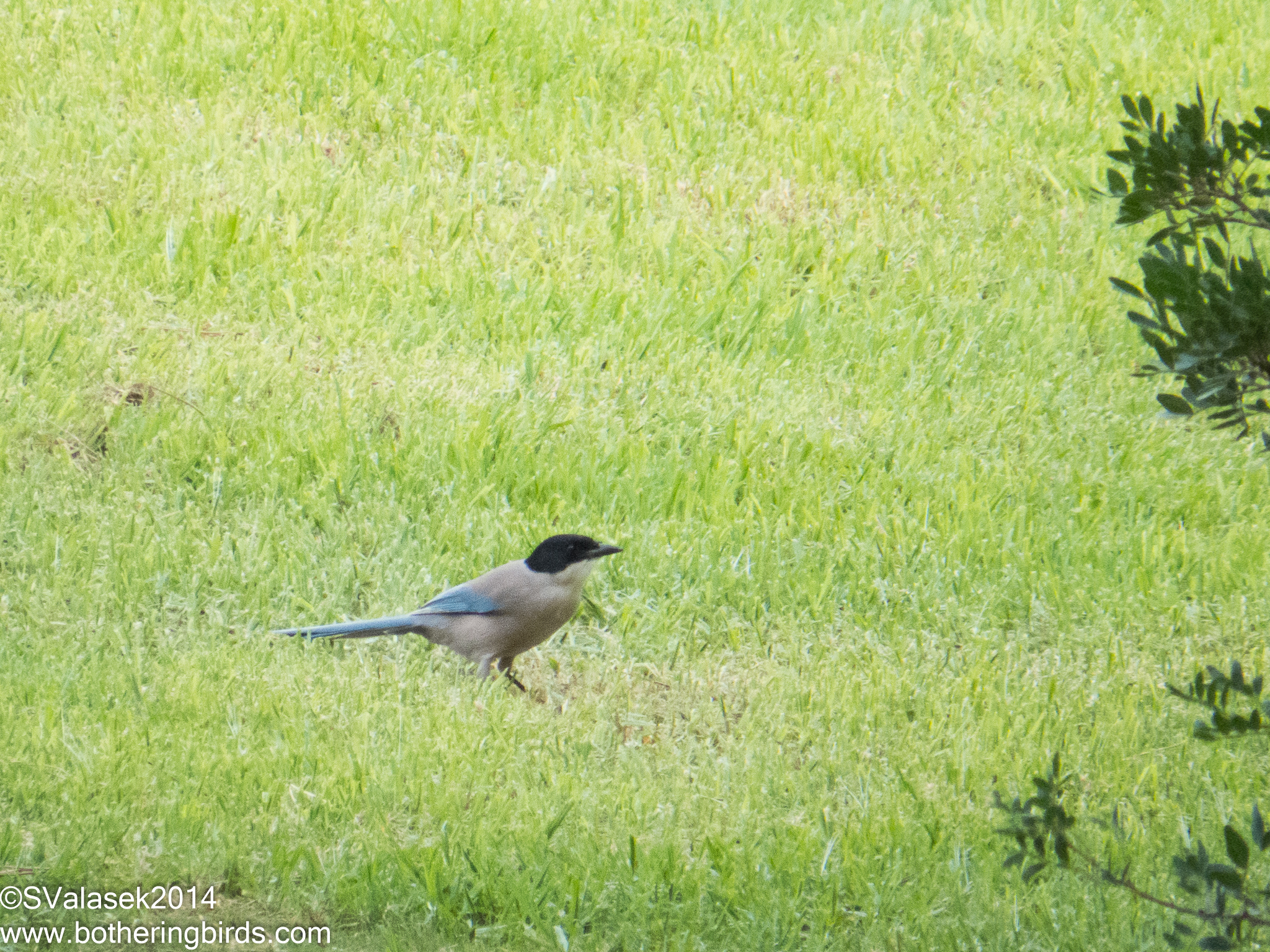 |
| Iberian Magpie - Faro, Portugal |
We eventually arrived at a 2-story hide overlooking some impressive wetlands alongside the course.
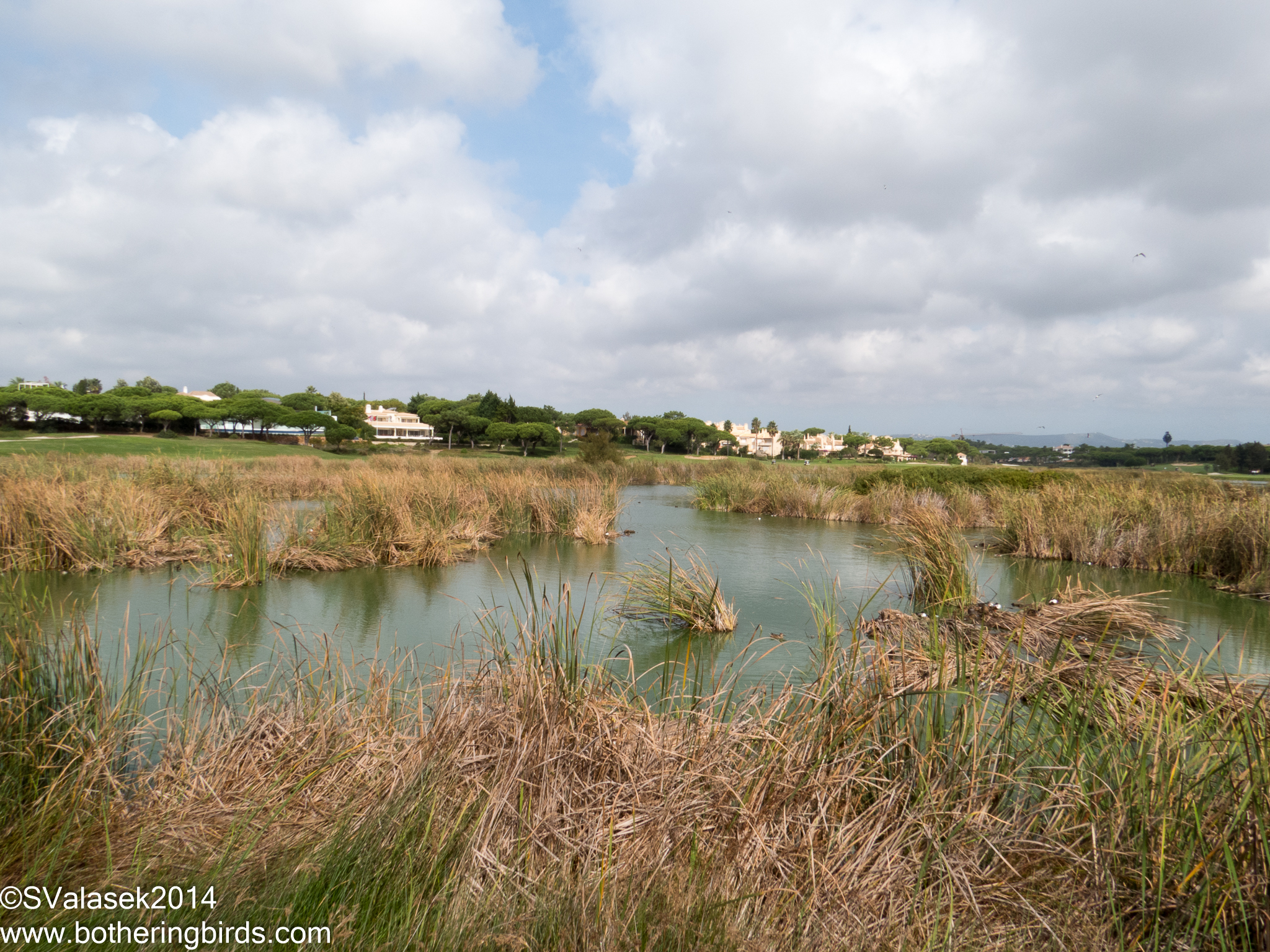 |
| Wetlands at San Lorenzo Golf Course - Faro, Portugal |
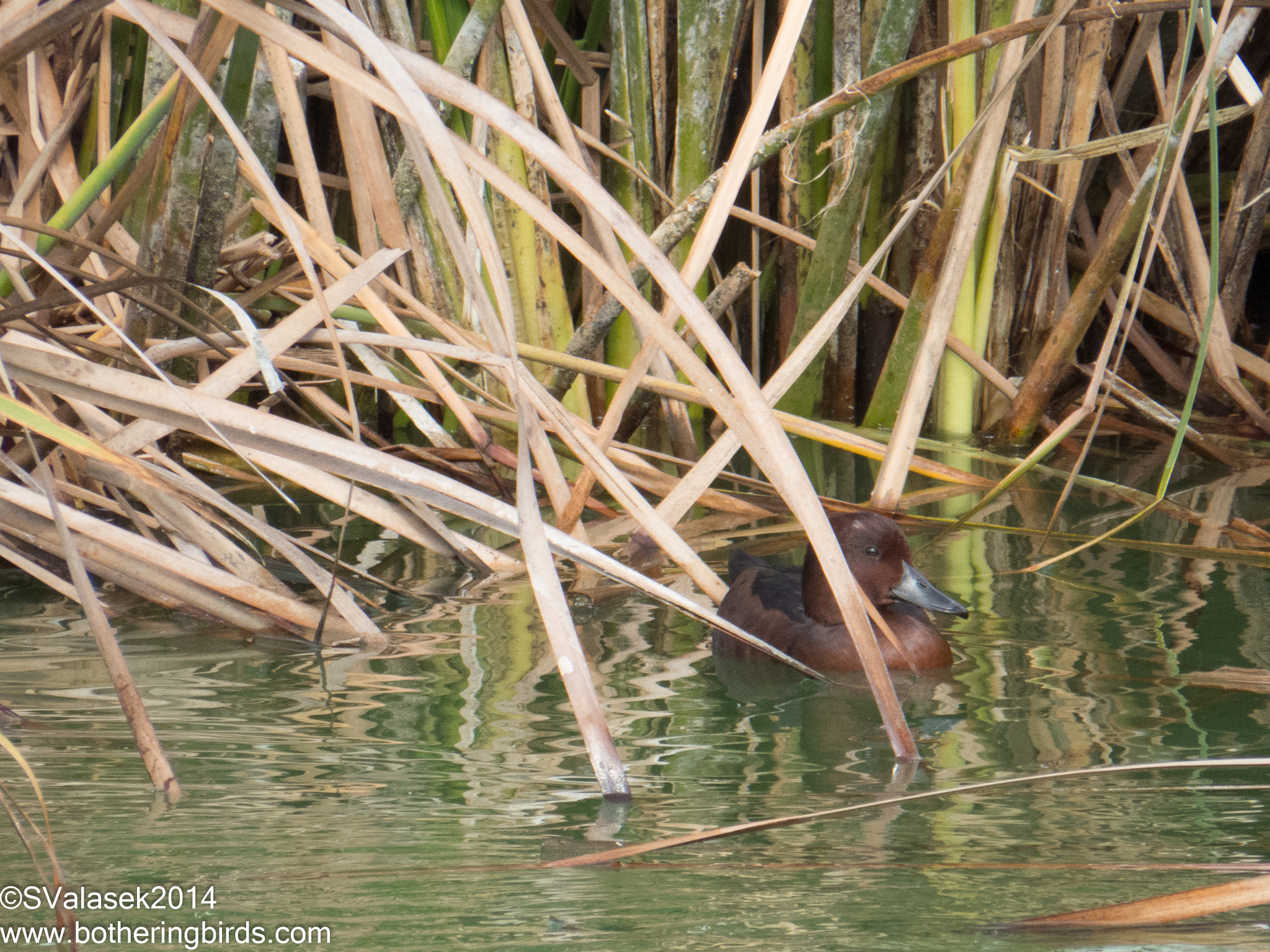 |
| Ferruginous Duck - Faro, Portugal |
 |
| Garganey - Faro, Portugal |
The target birds for the marsh were Purple Swamphens, Kingfishers and maybe a Little Bittern. Purple Swamphens where plentiful, with 5 or 6 at various places on the wetlands.
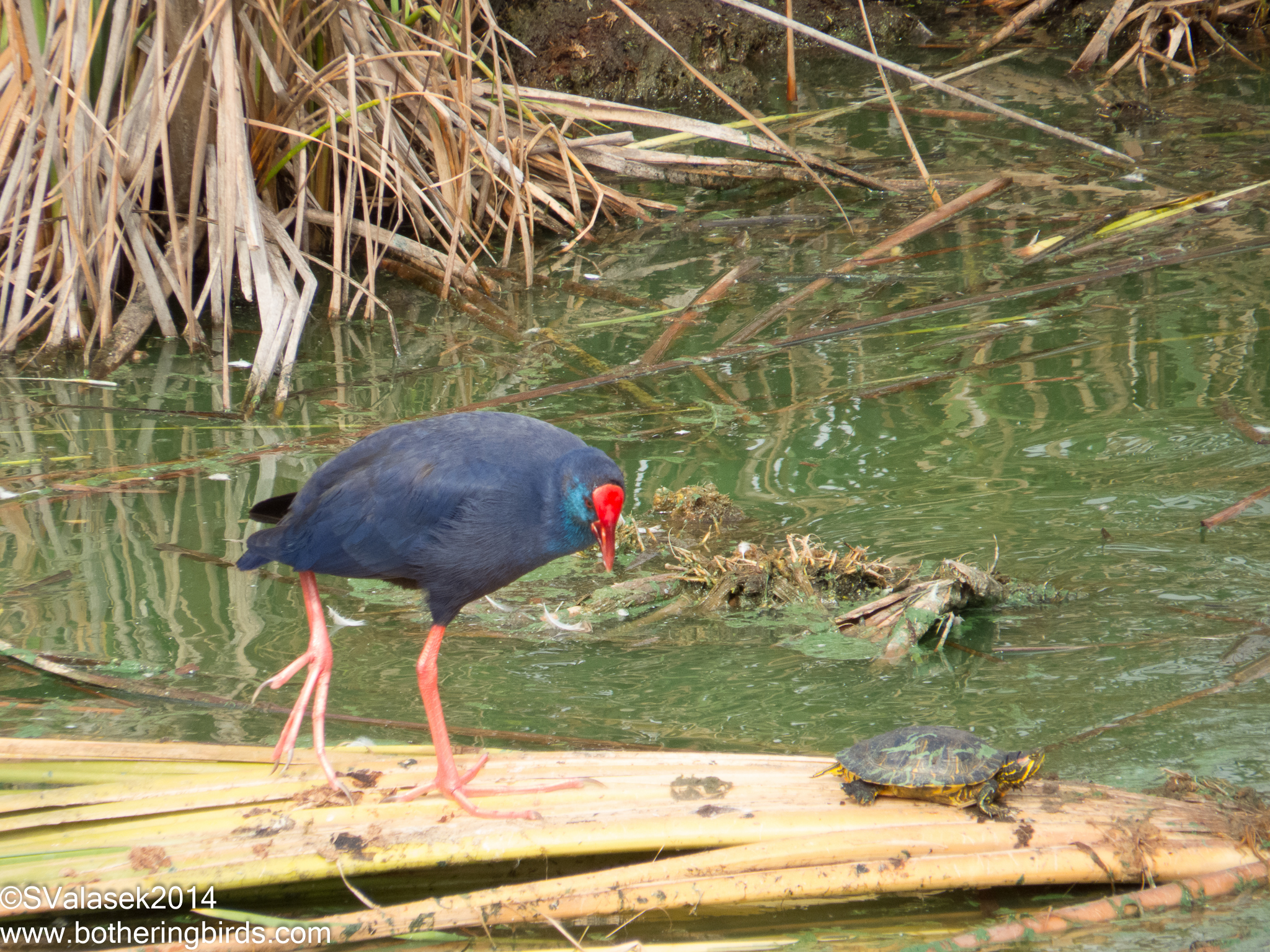 |
| Purple Swamphen - Faro, Portugal |
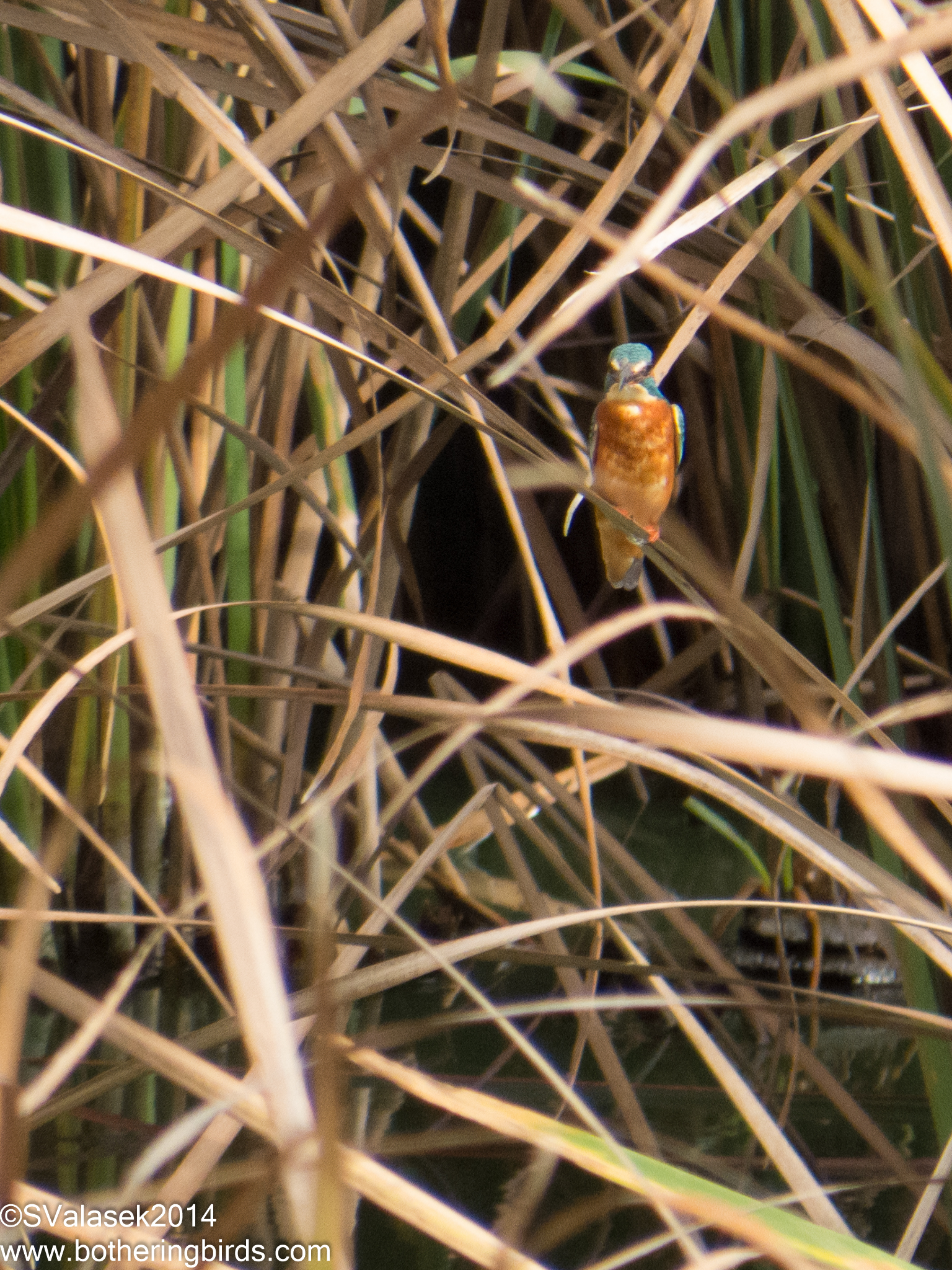 |
| Kingfisher - Faro, Portugal |
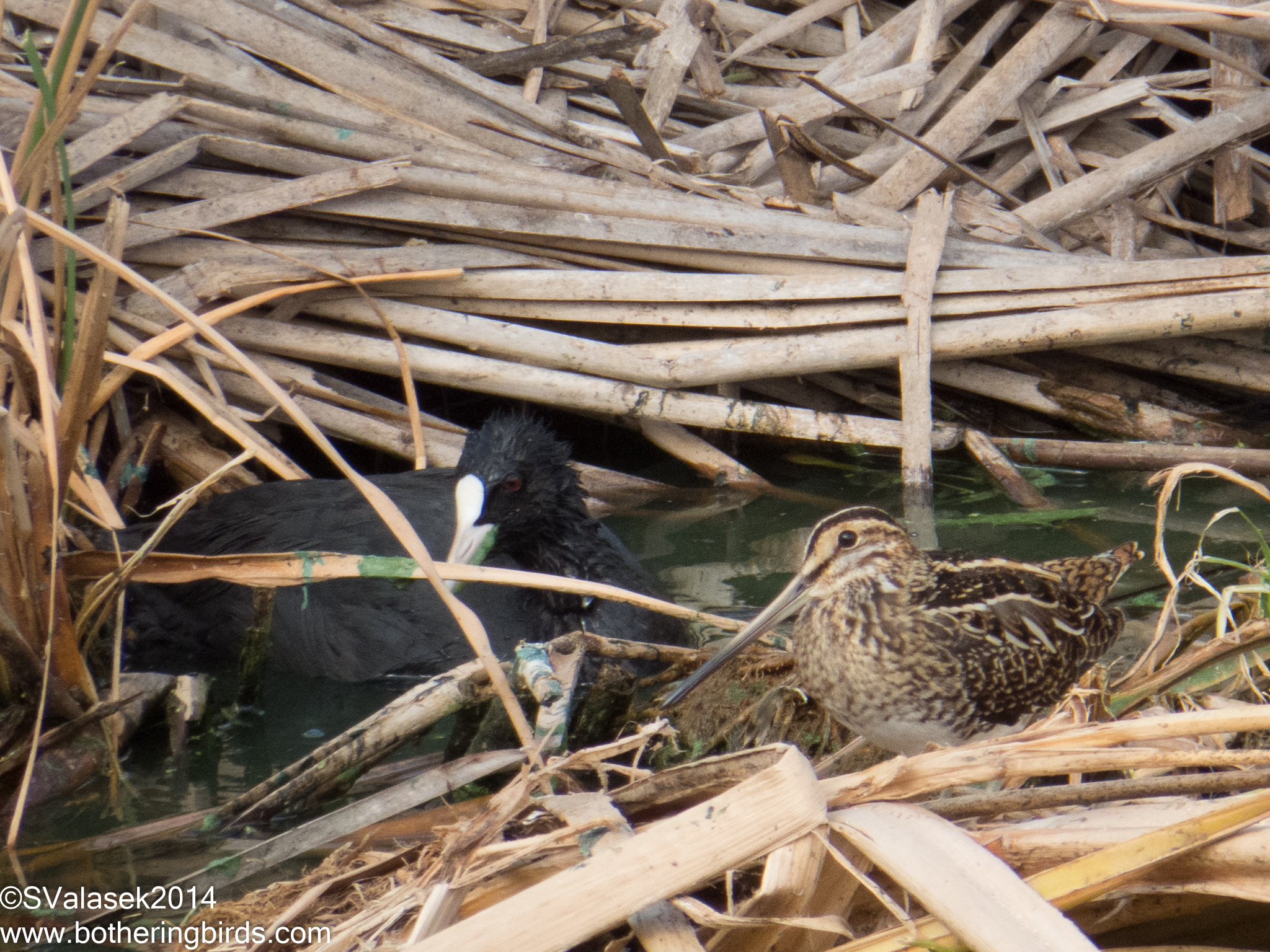 |
| Common Snipe and Coot - Faro, Portugal |
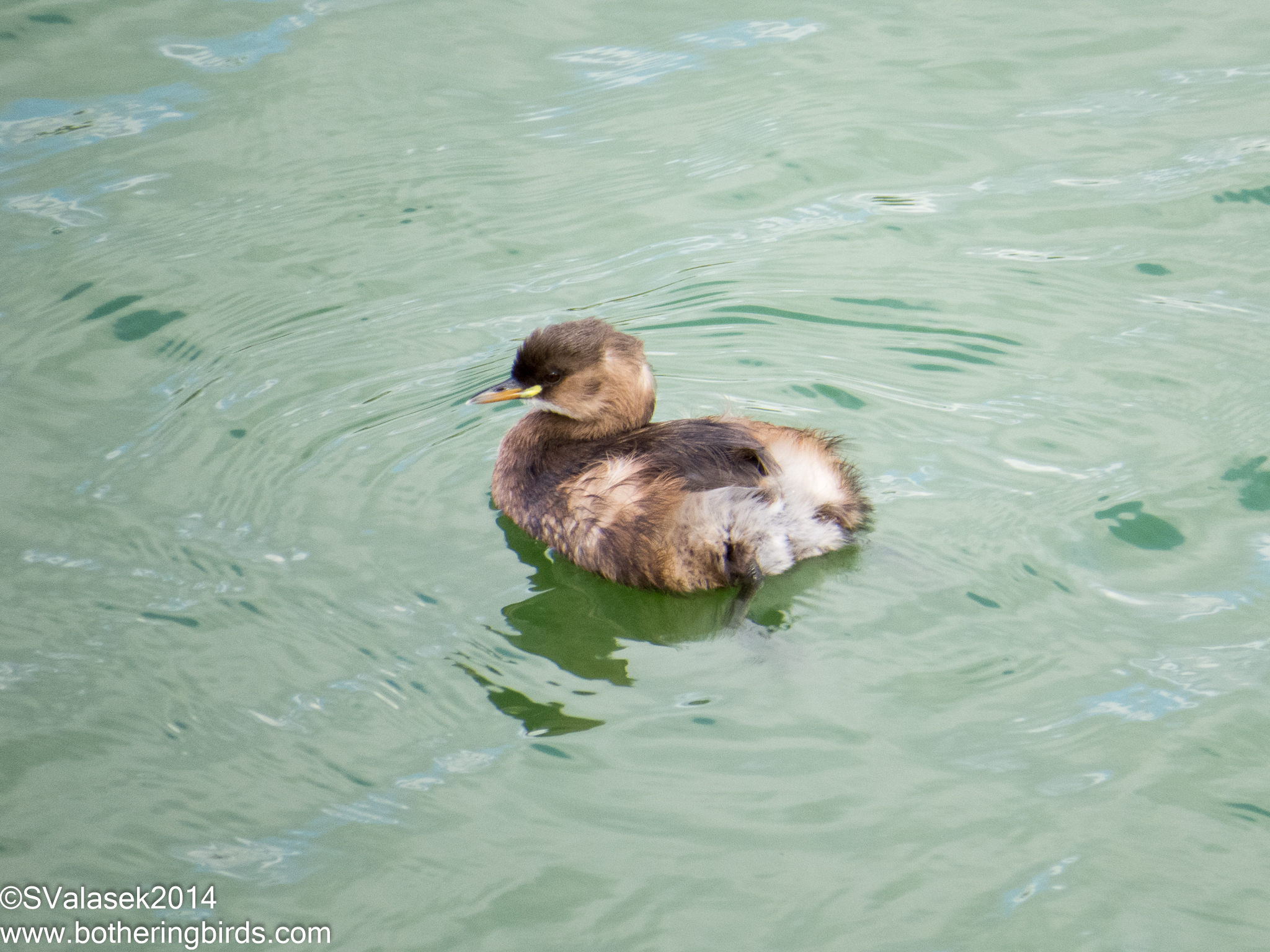 |
| Little Grebe - Faro, Portugal |
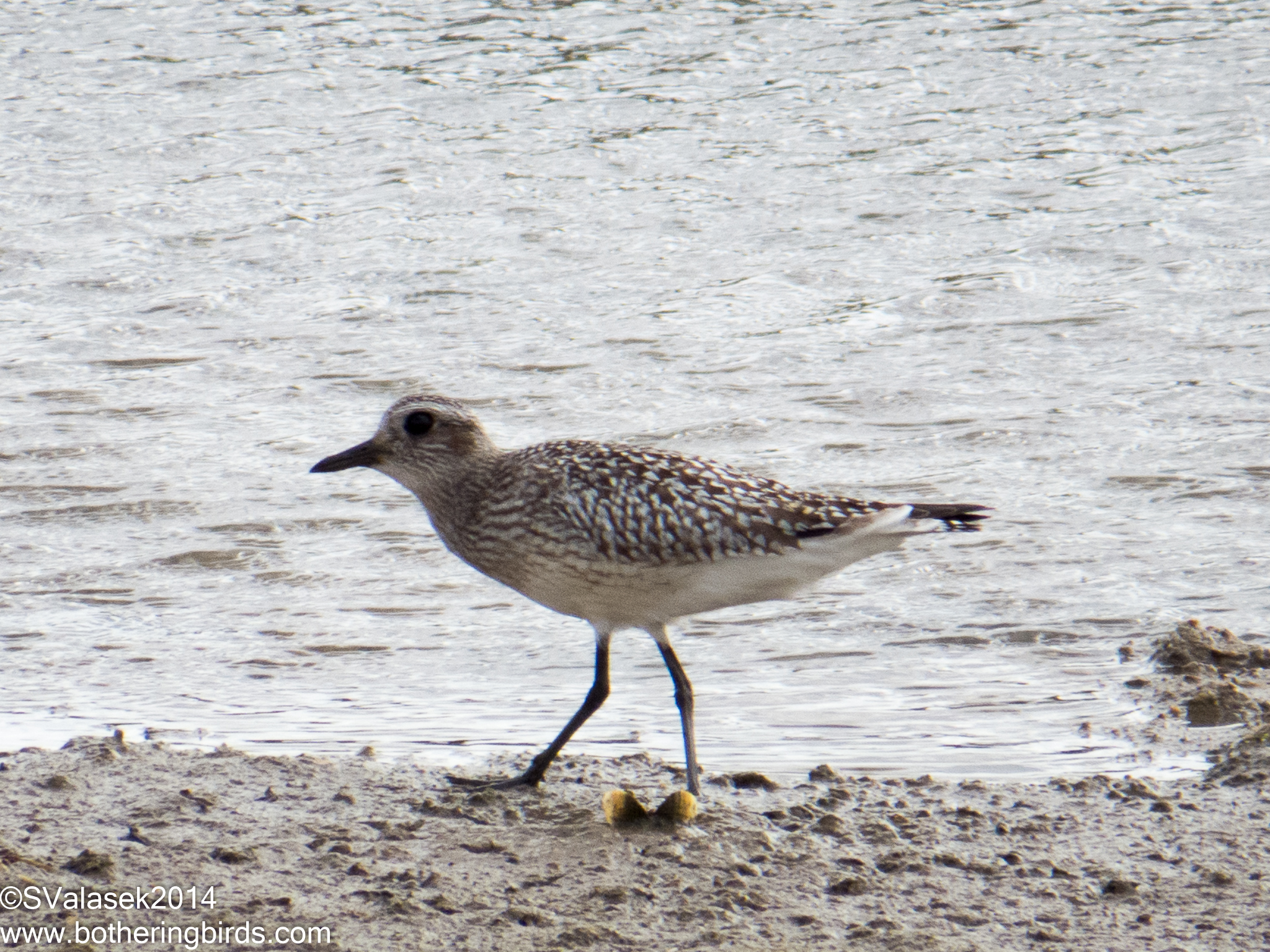 |
| Grey Plover - Faro, Portugal |
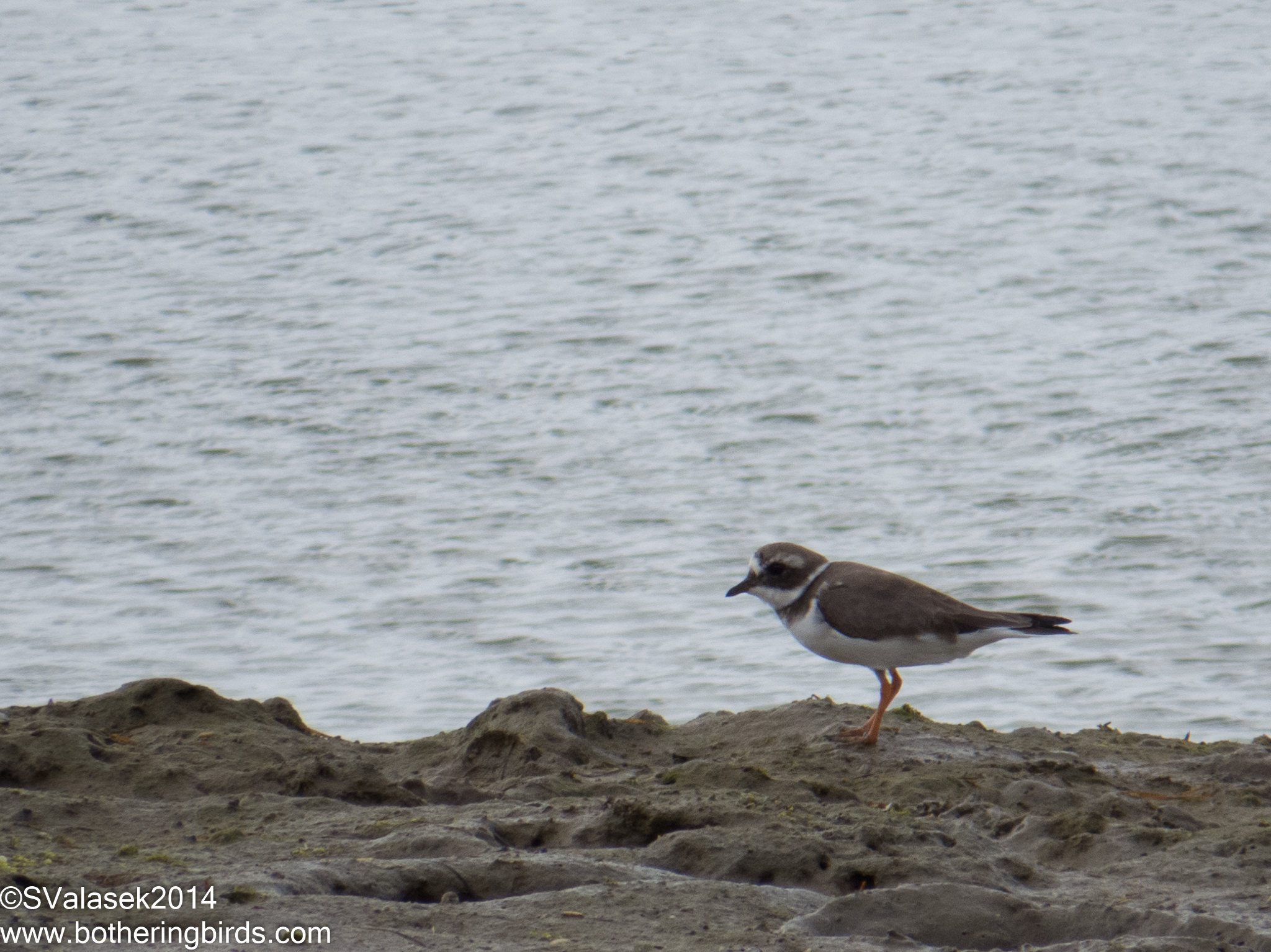 |
| Kentish Plover - Faro, Portugal |
I had seen some really large nests on the drive down to Algarve from Portugal and found out that they were Stork nests, but this was the first time seeing some.
It was time for lunch and to decide what we were going to do with the second half of our day. Either head west to the Southwestern tip of Europe or north looking for the heaviest flying bird on Earth. But by lunch we had already seen 83 species and 37 lifers, what a great day.
I'll conclude the trip with another post,
Thanks for making it this far,
Cheers.
I'll conclude the trip with another post,
Thanks for making it this far,
Cheers.

